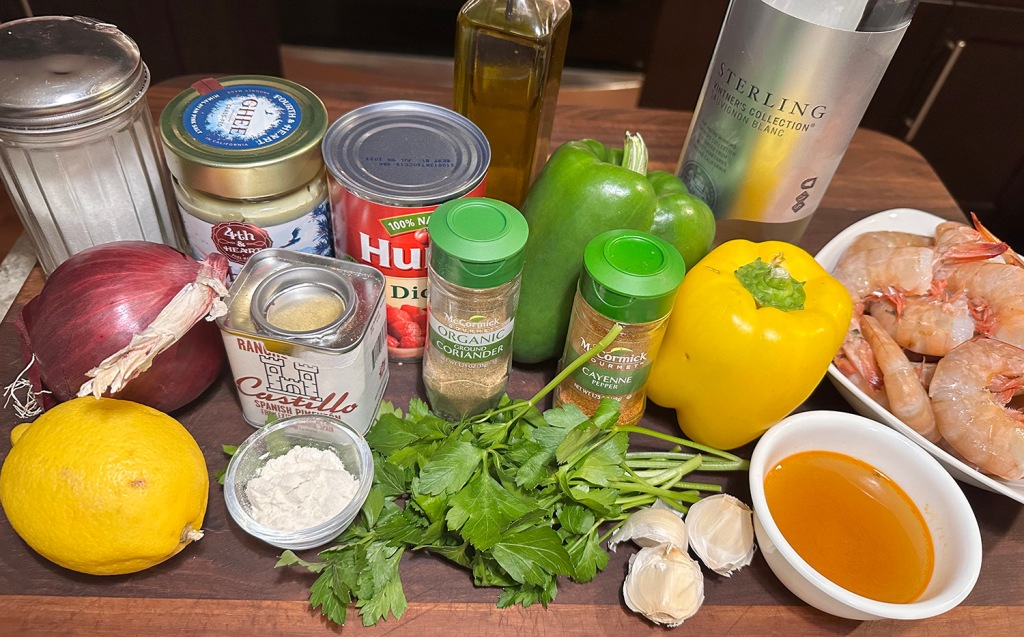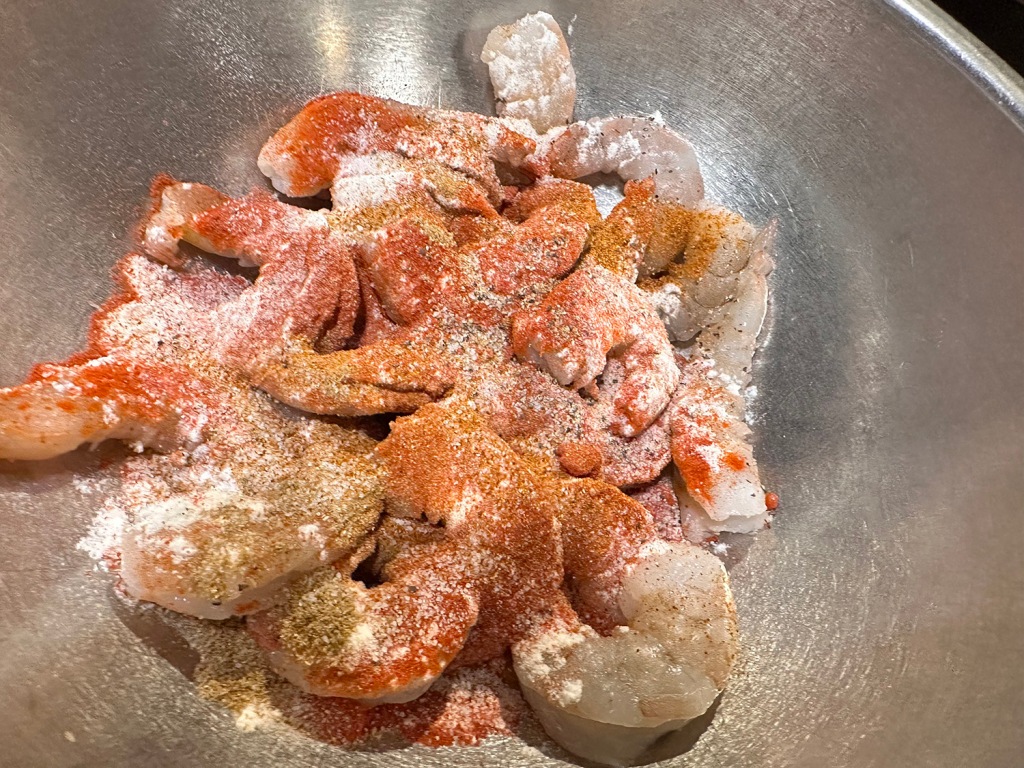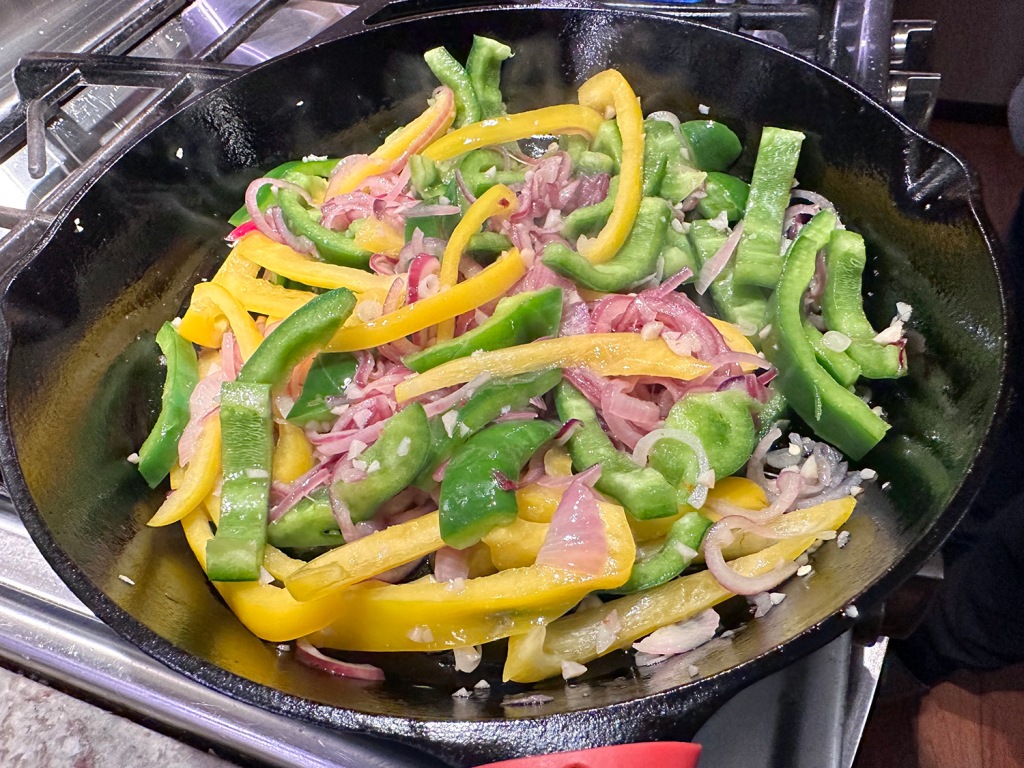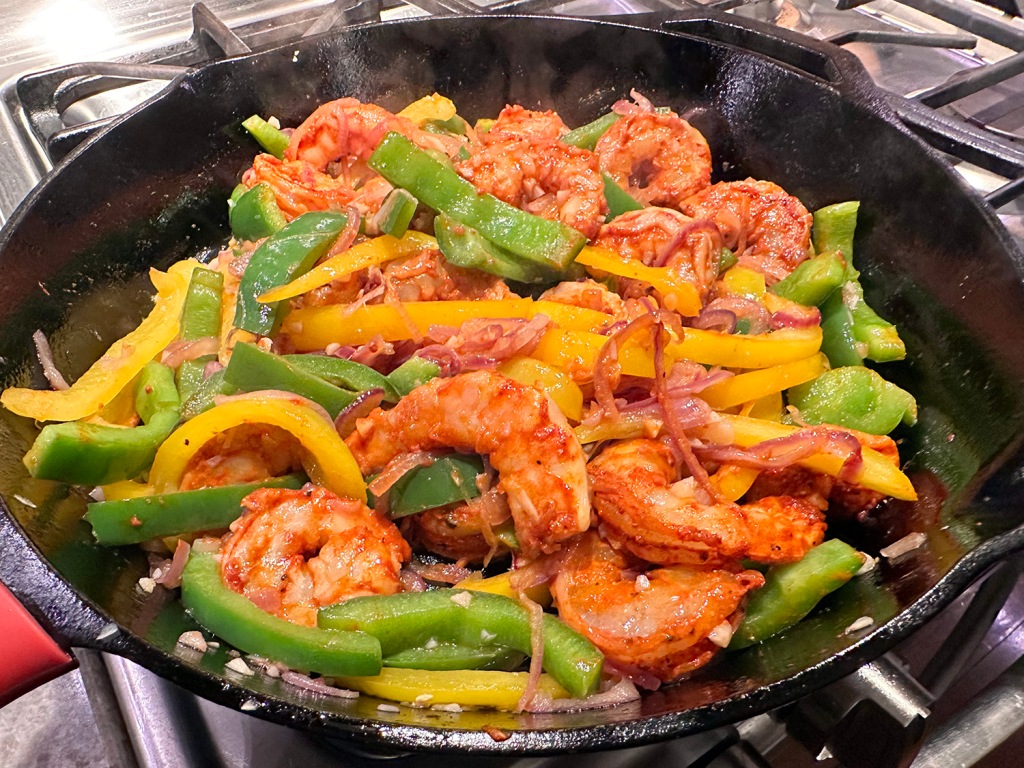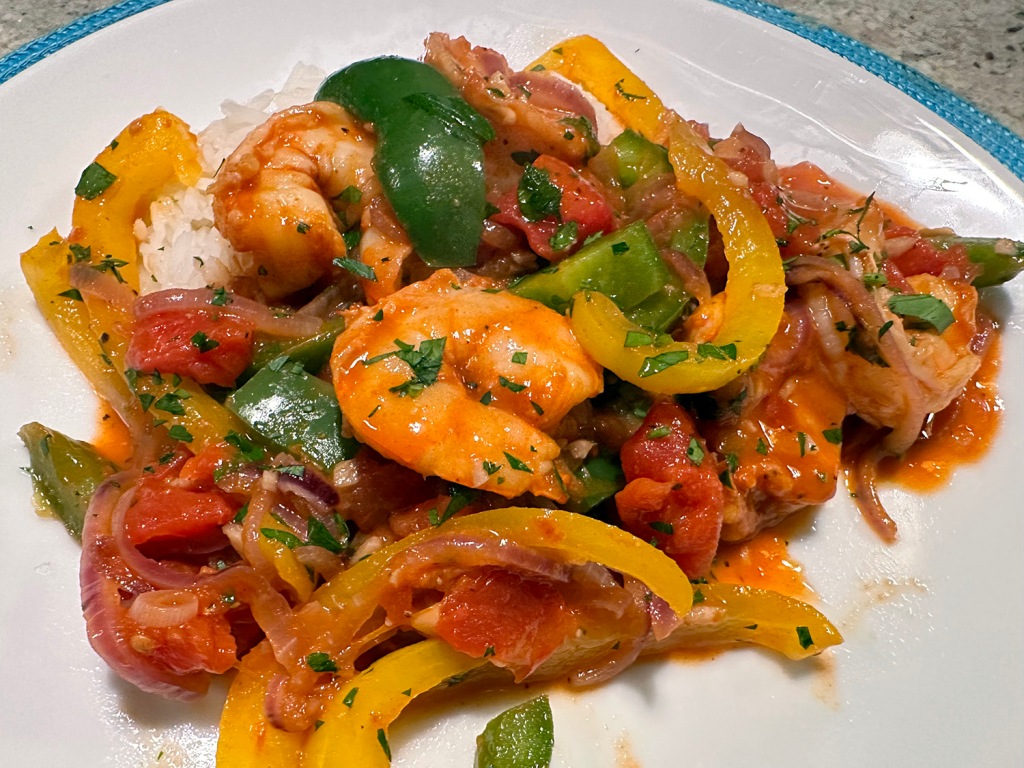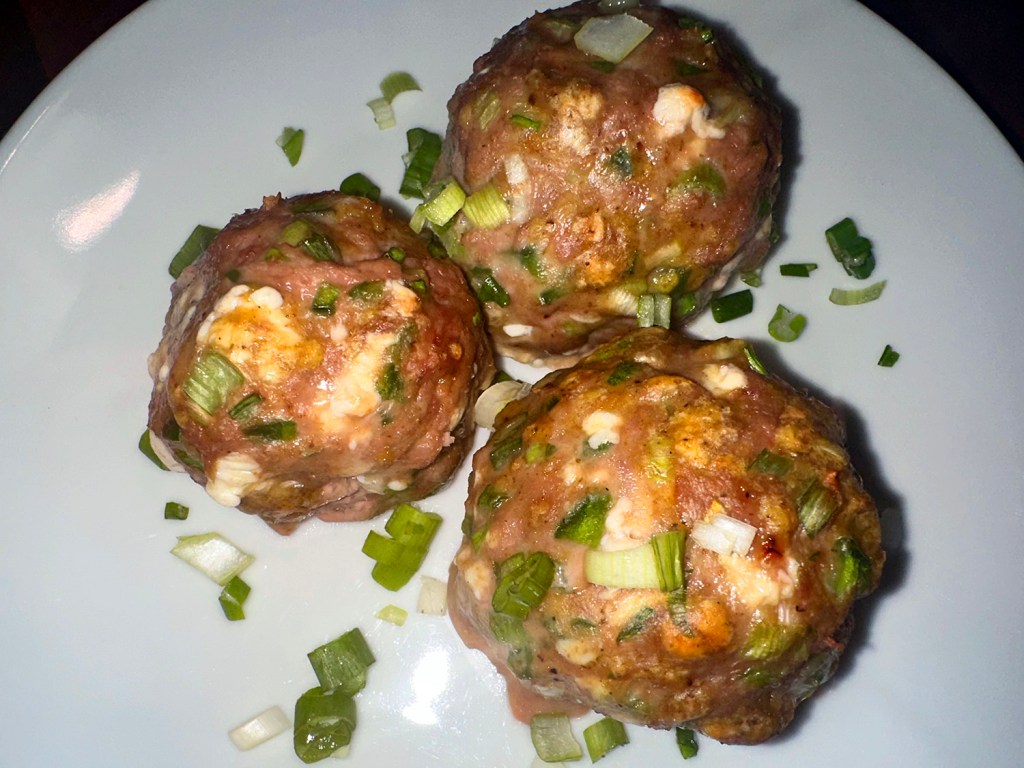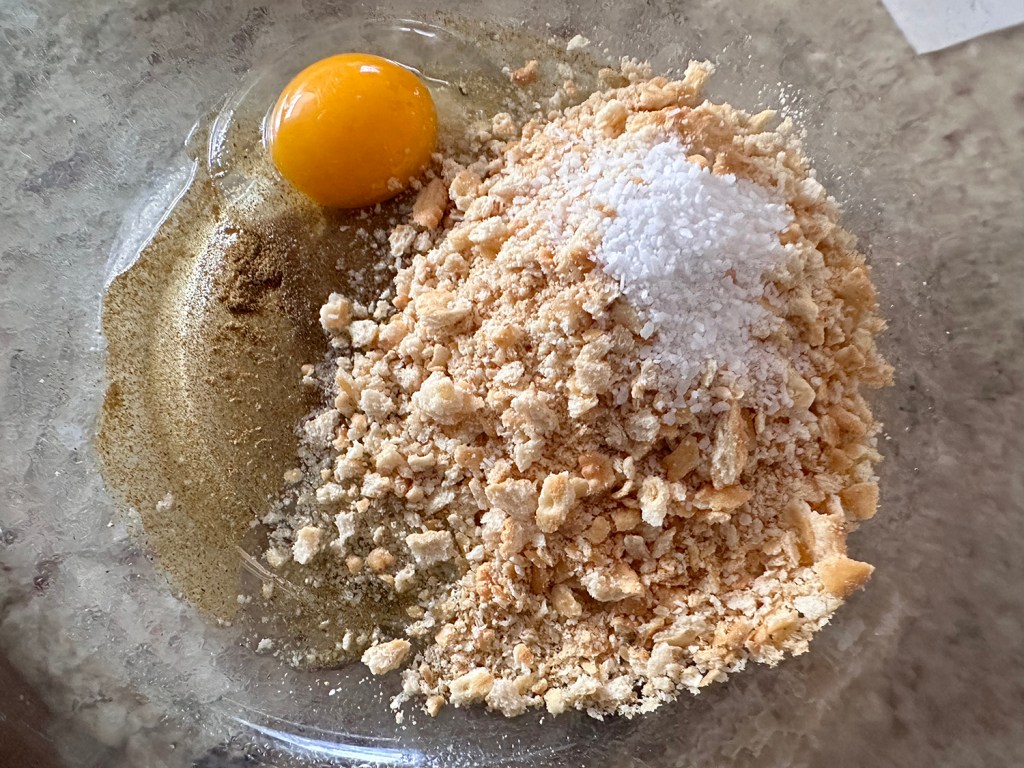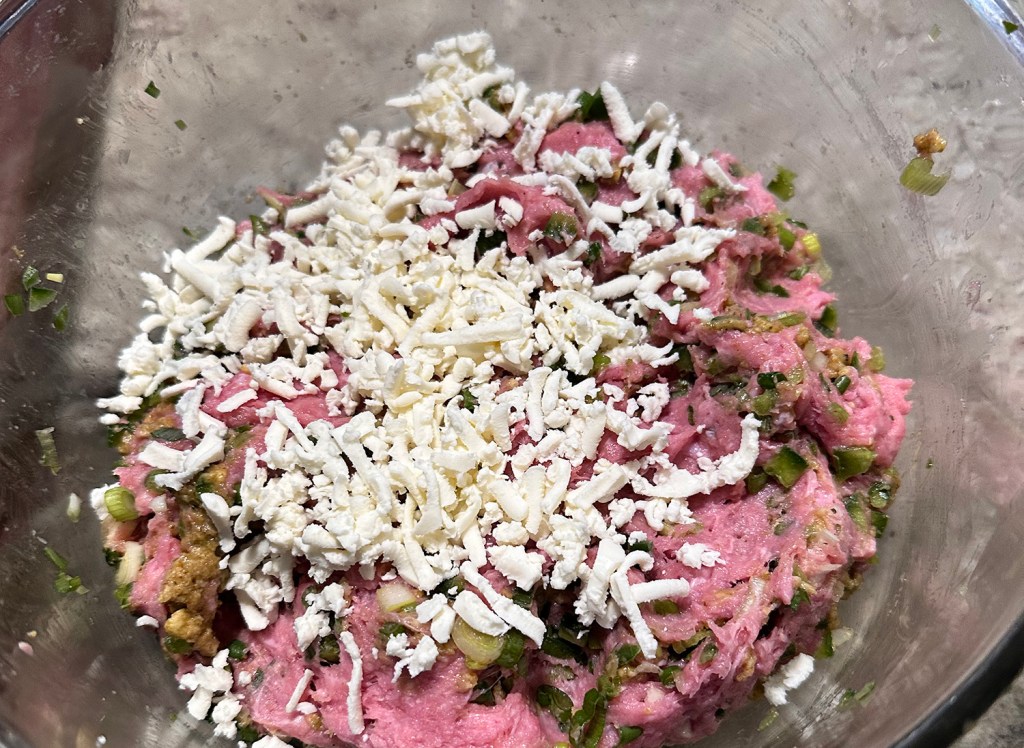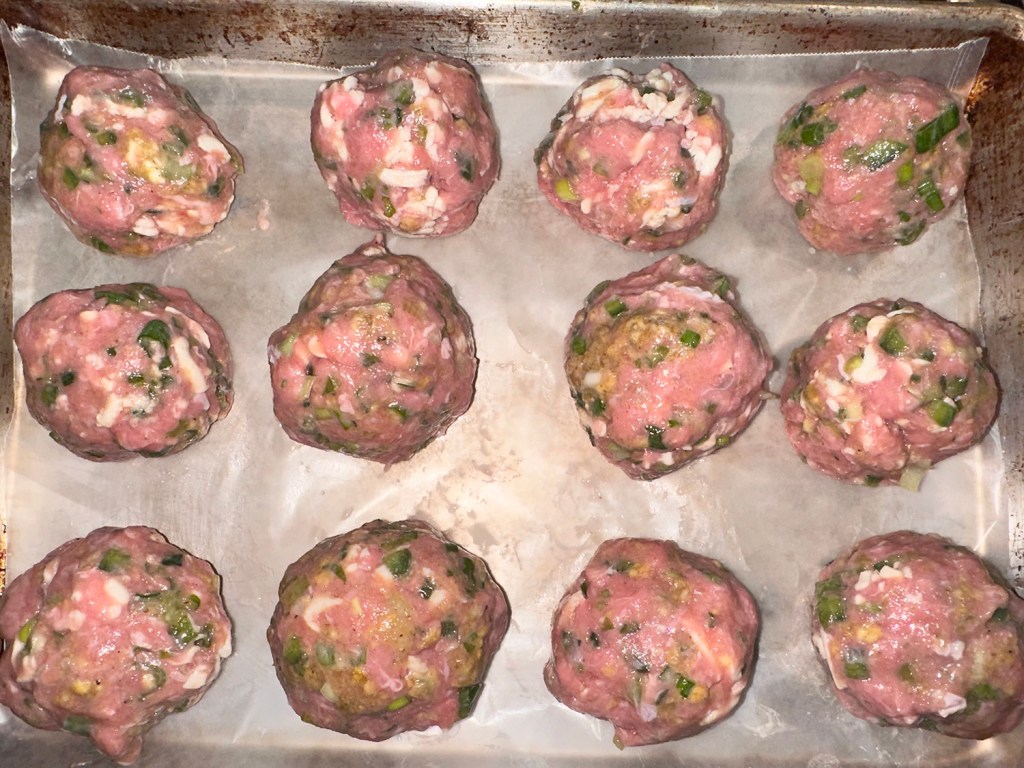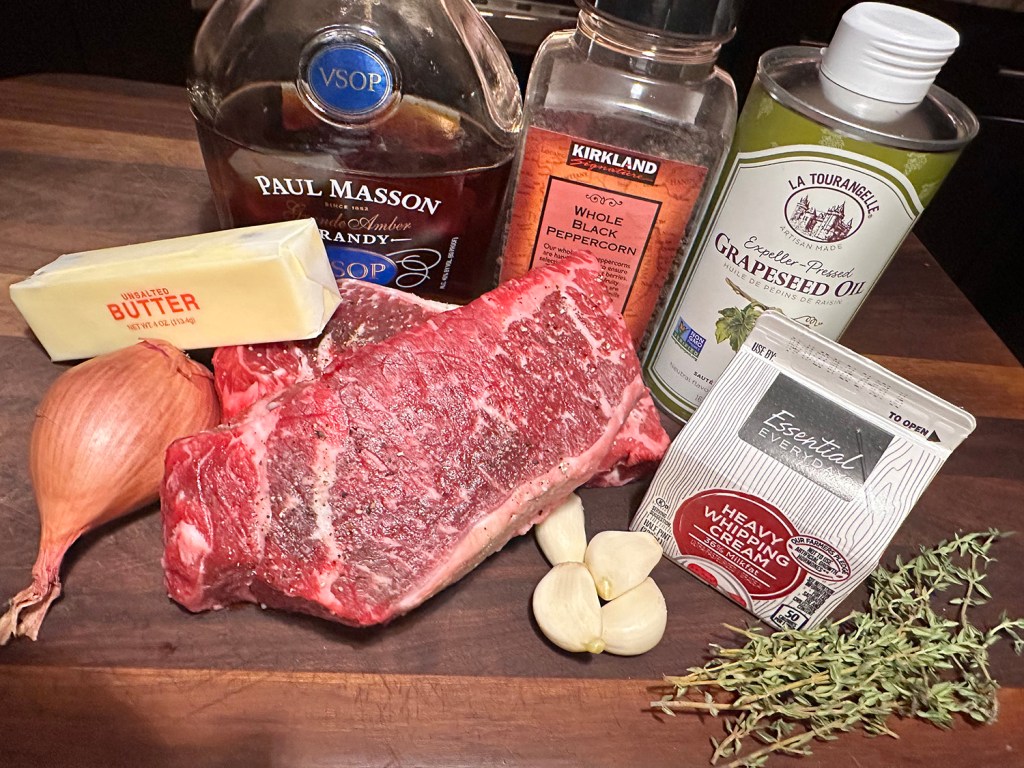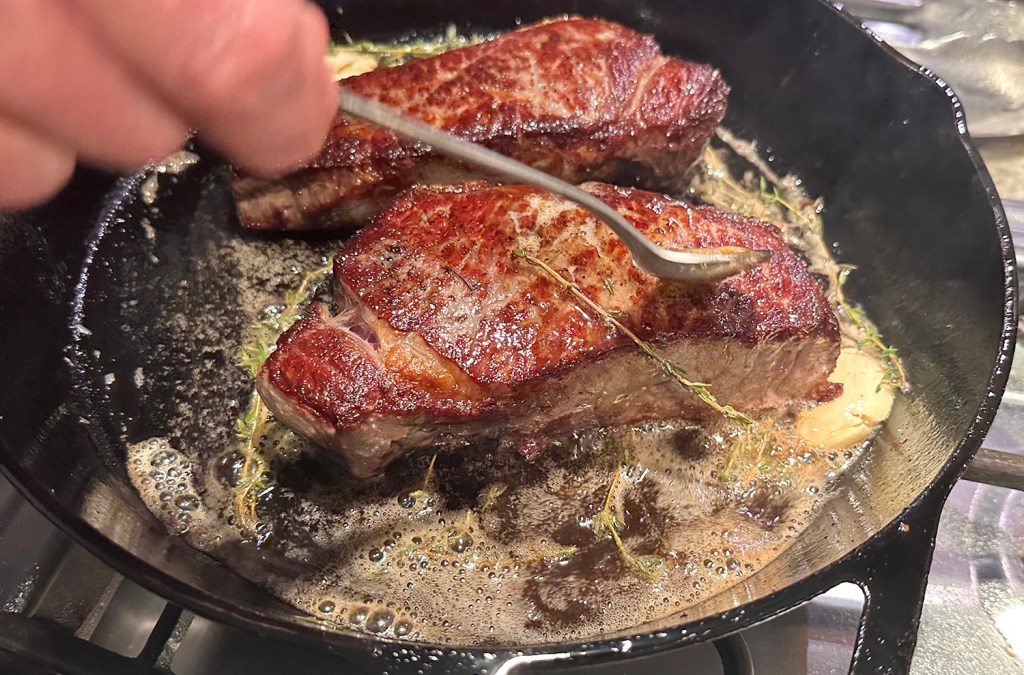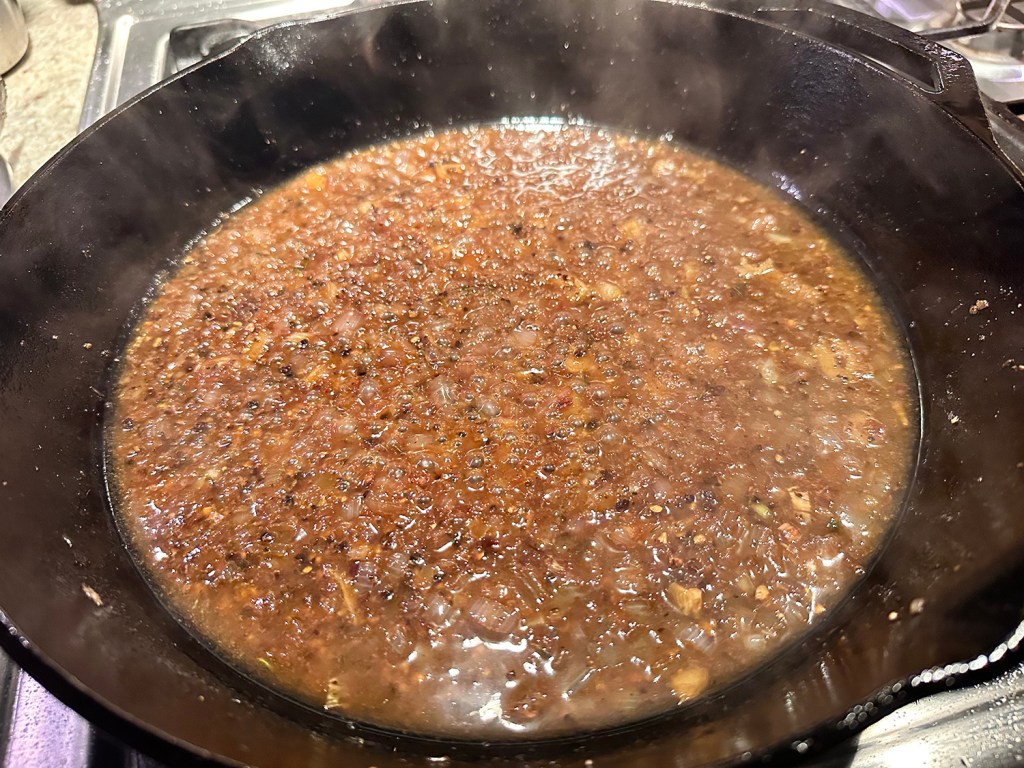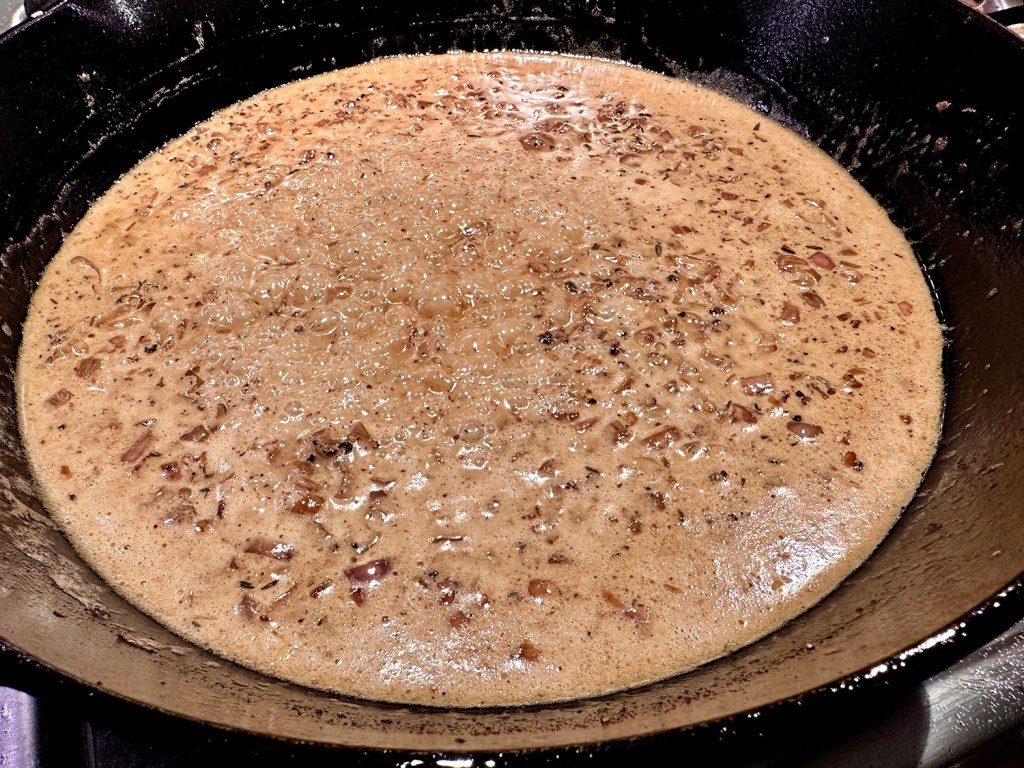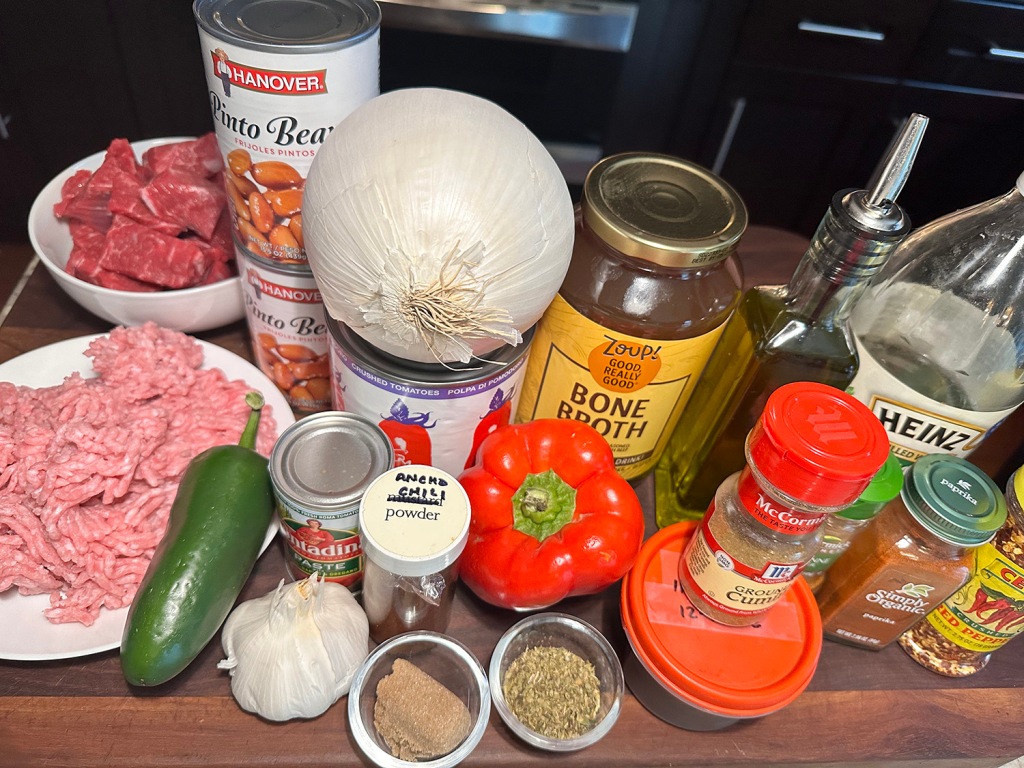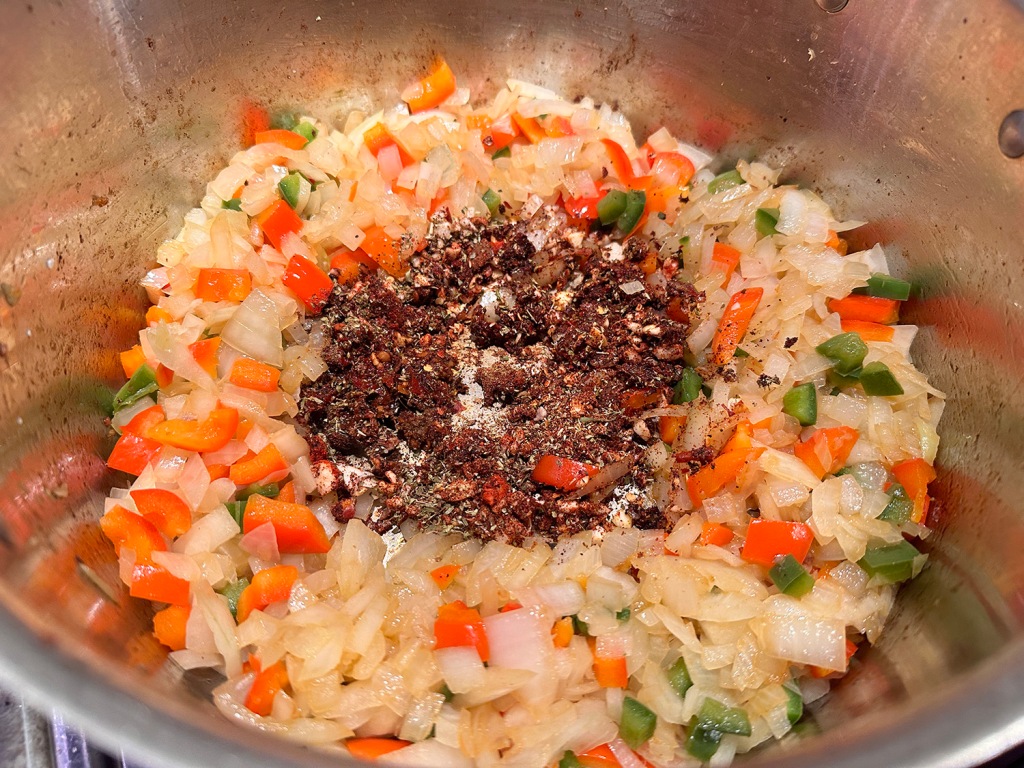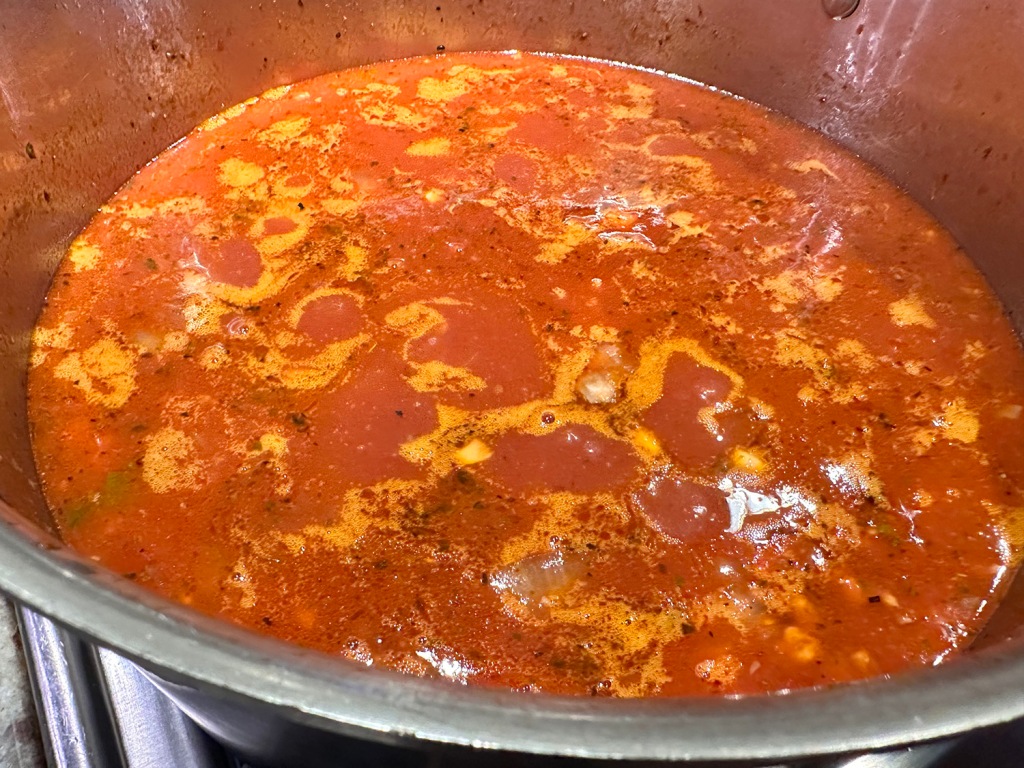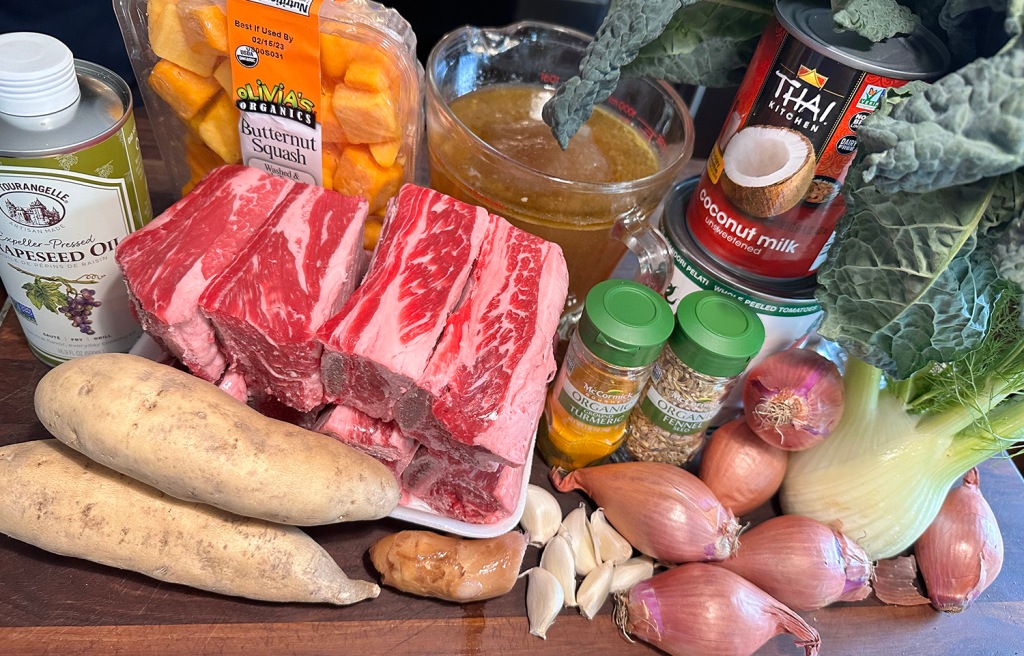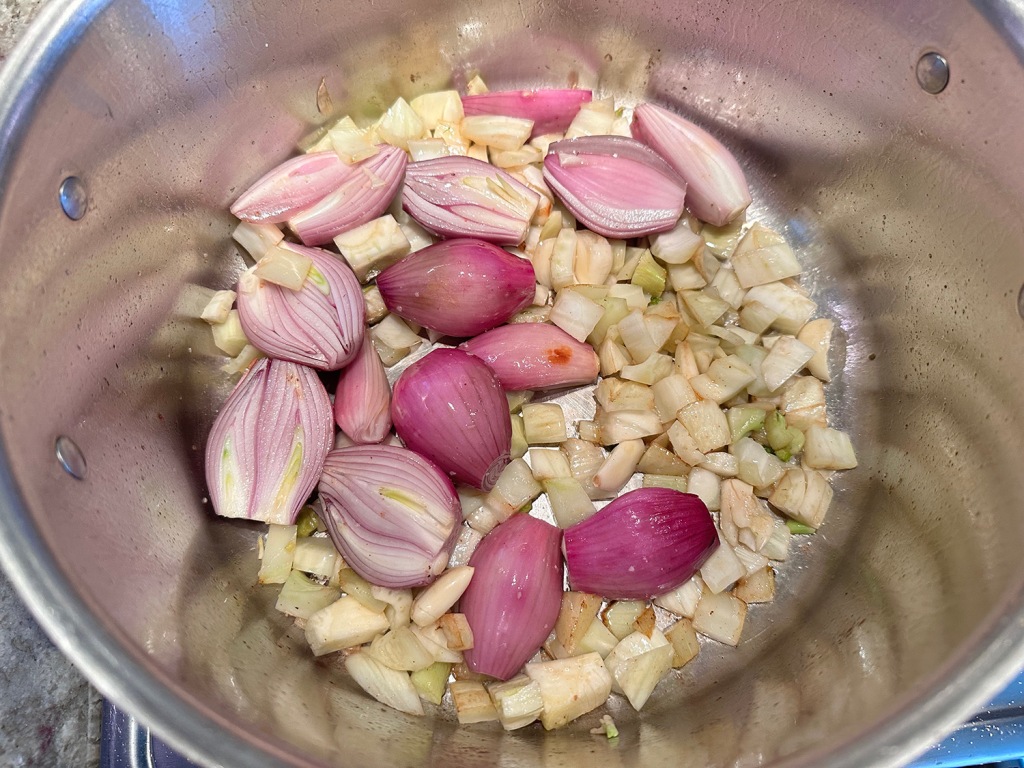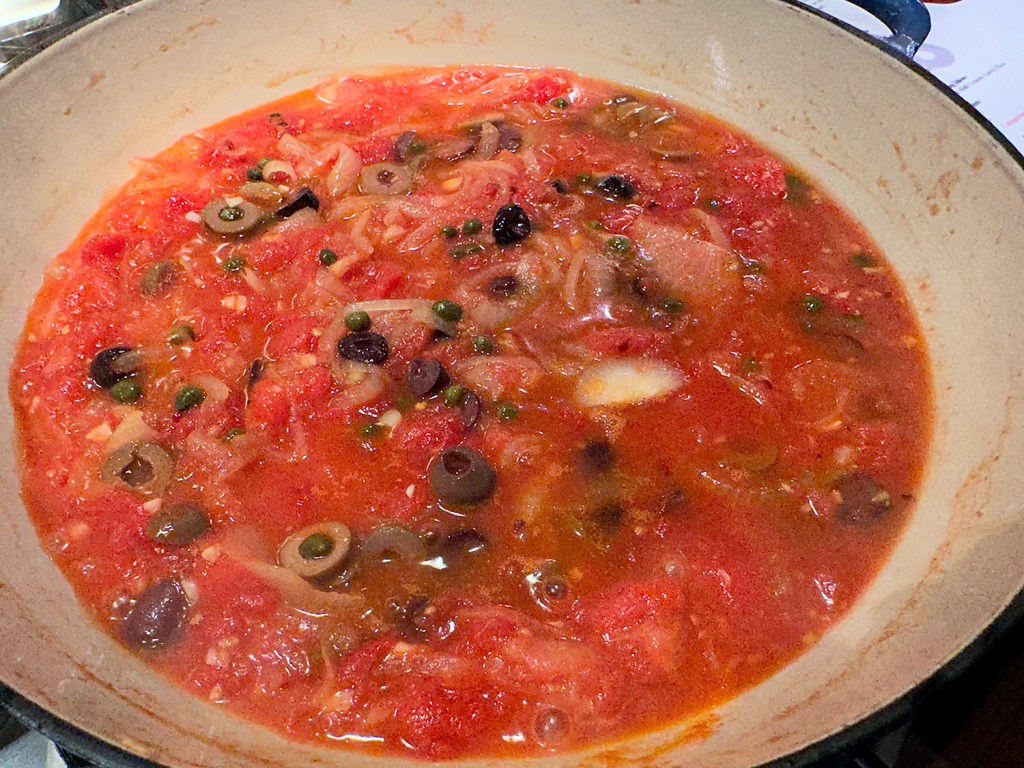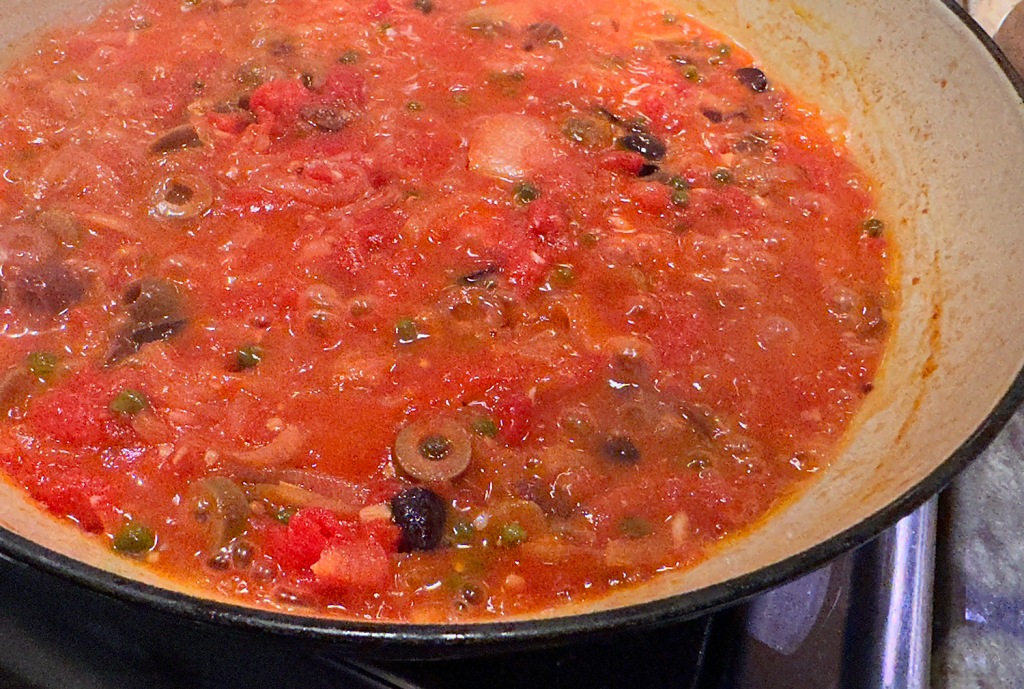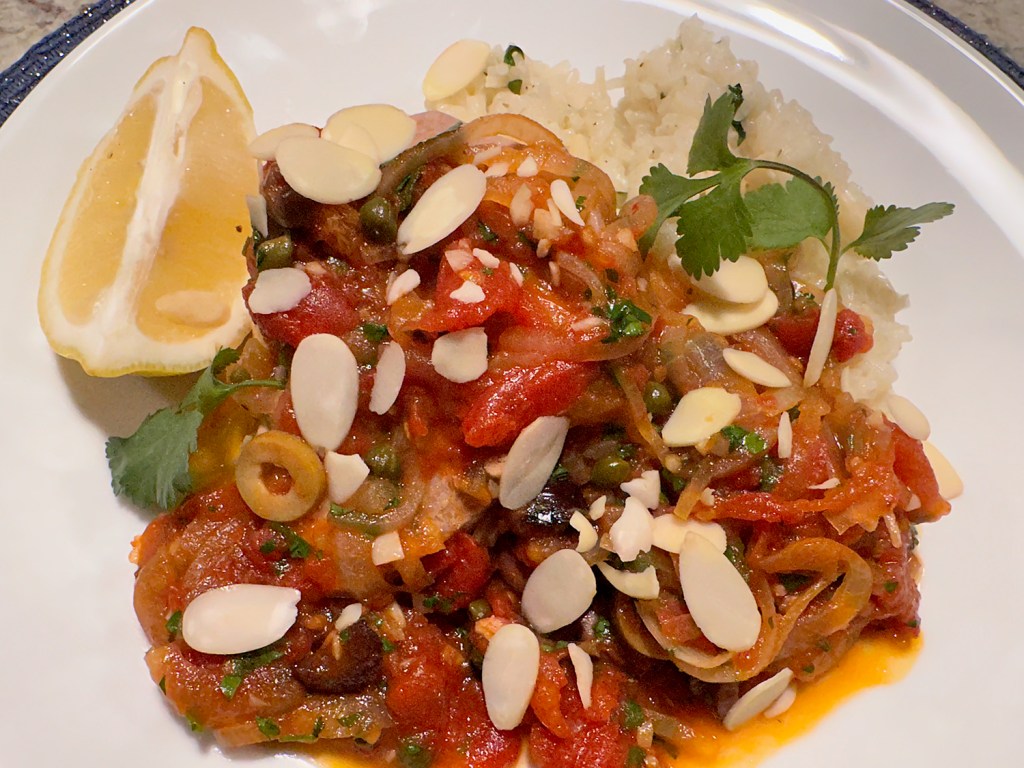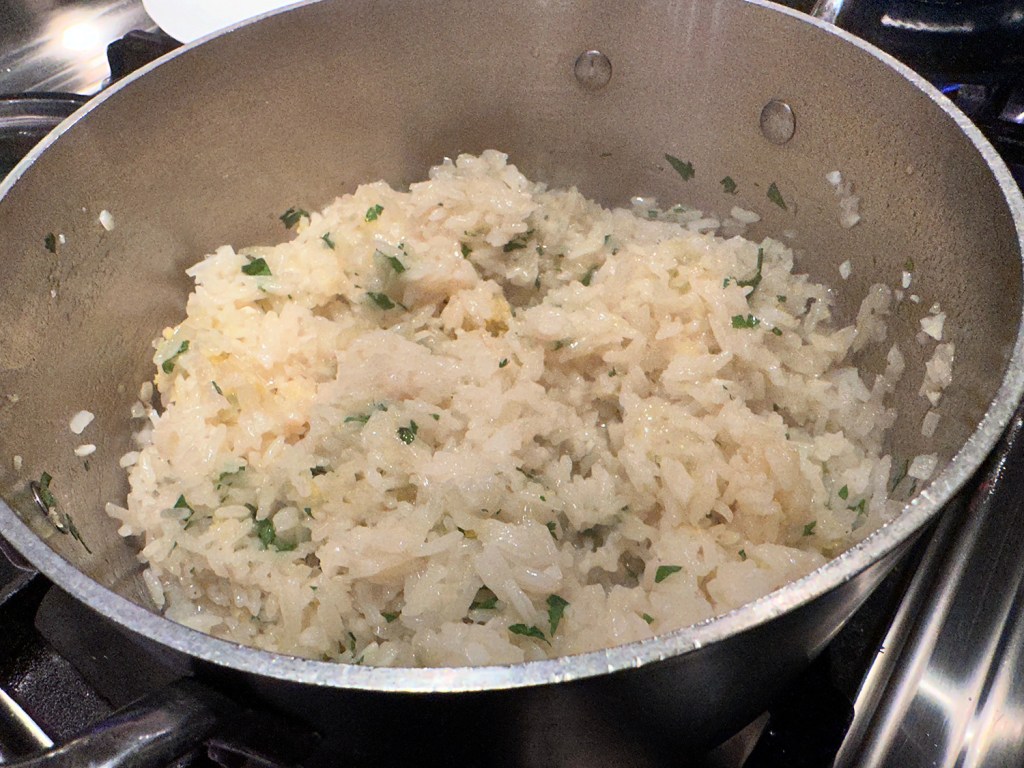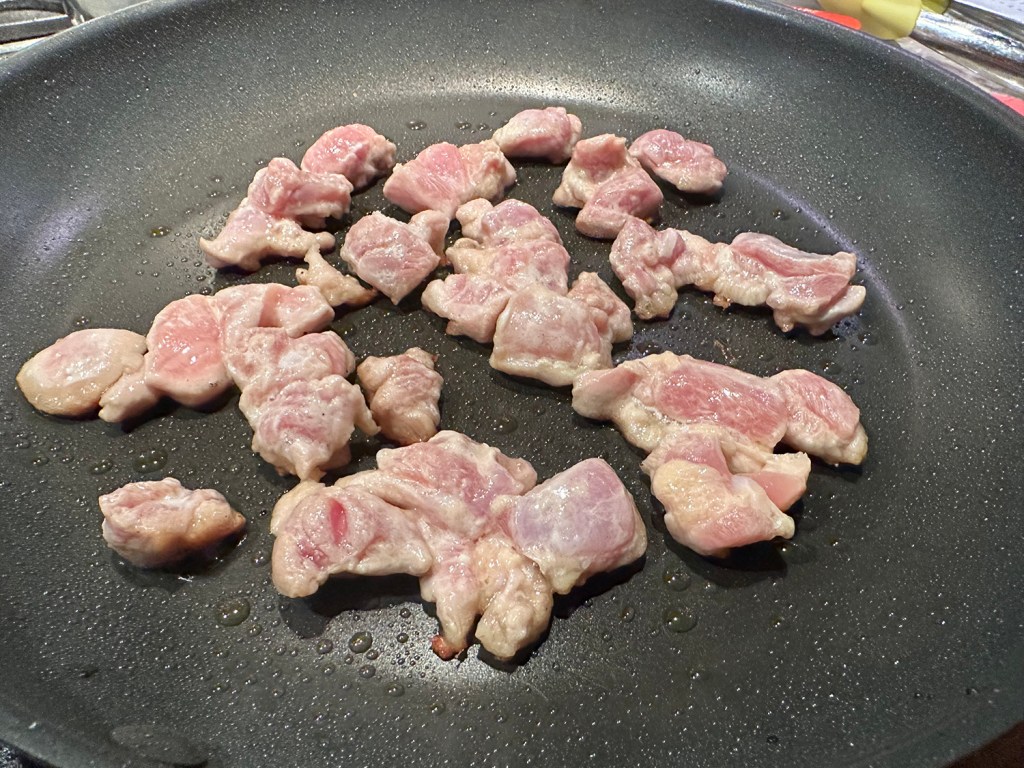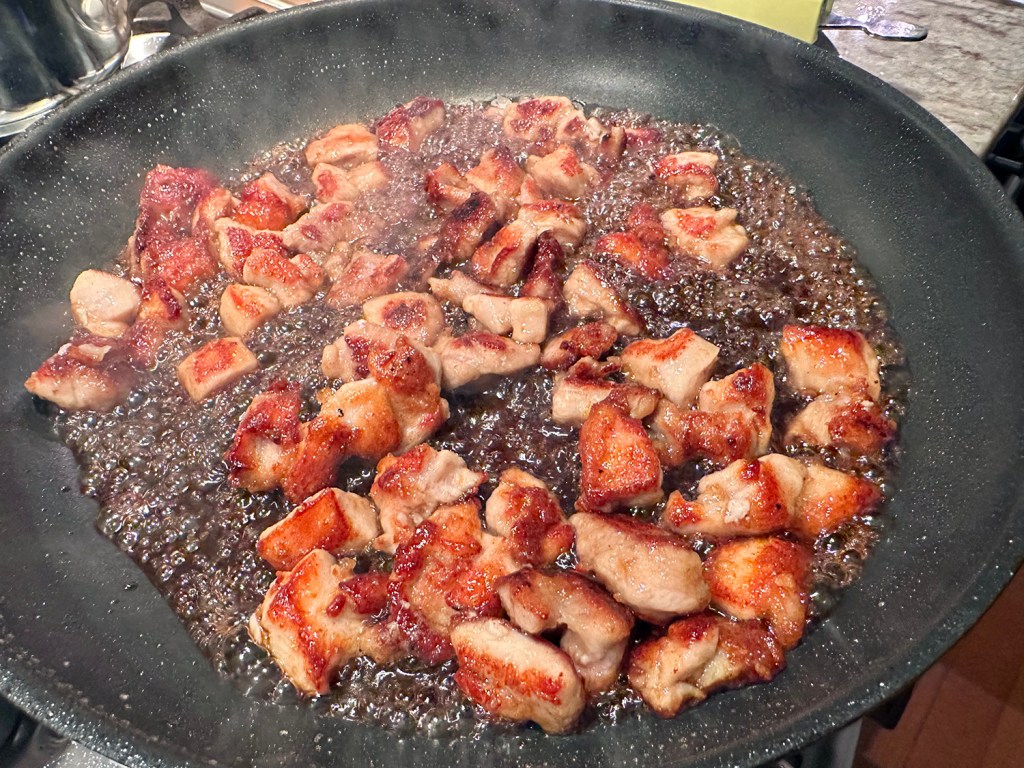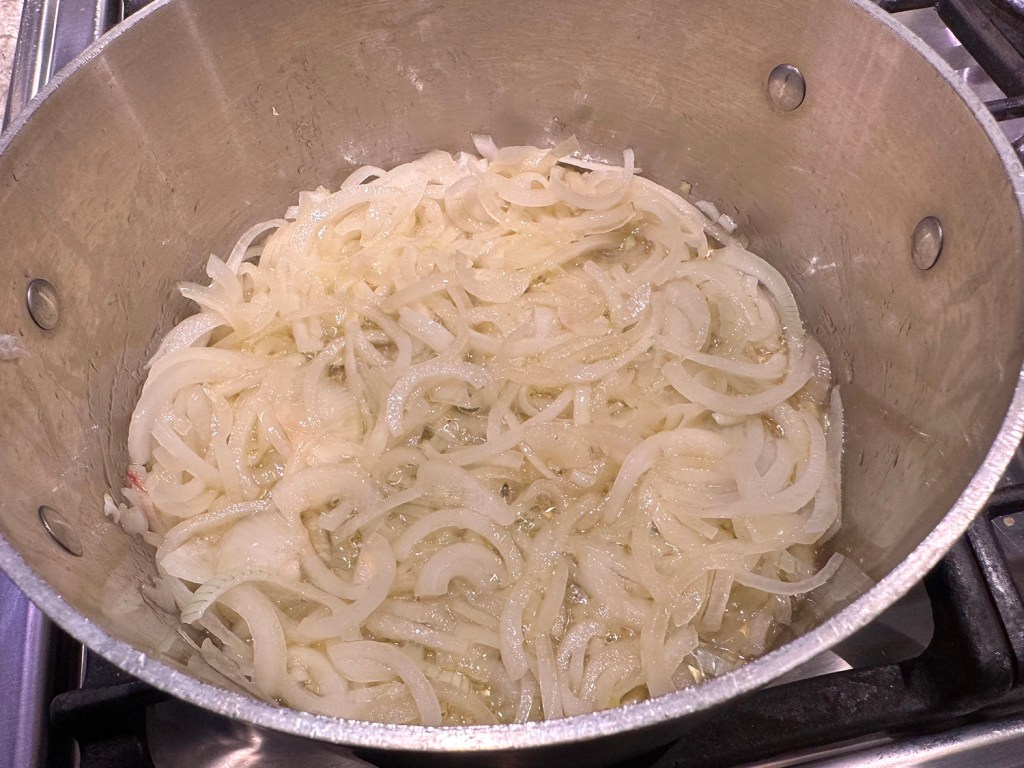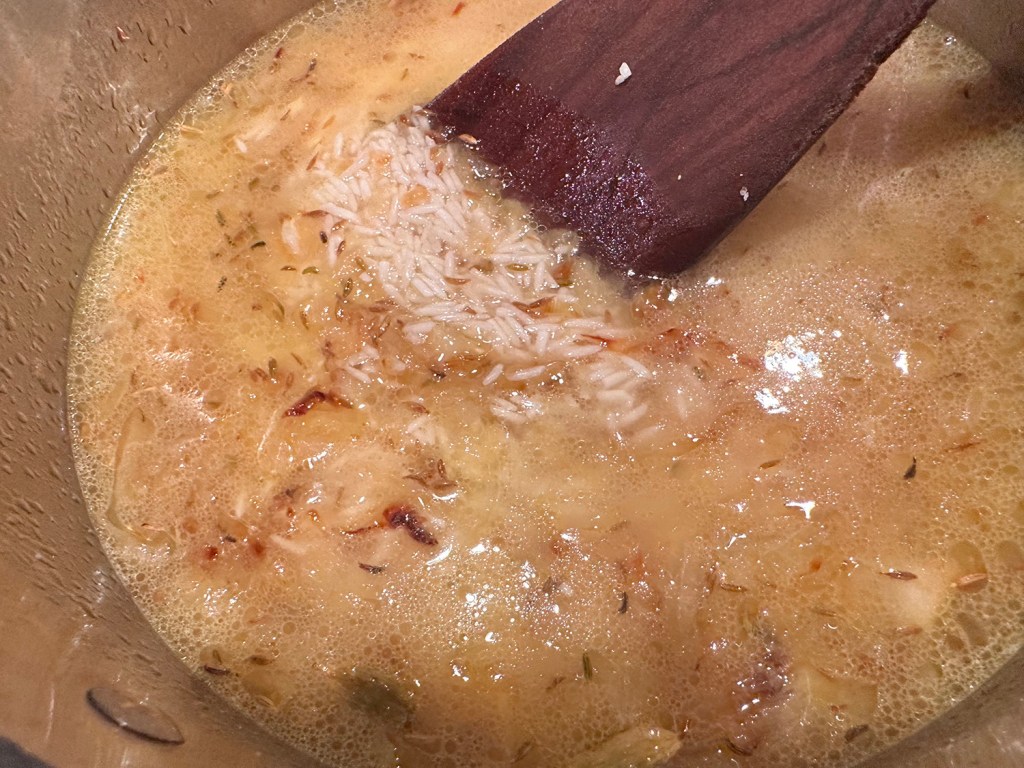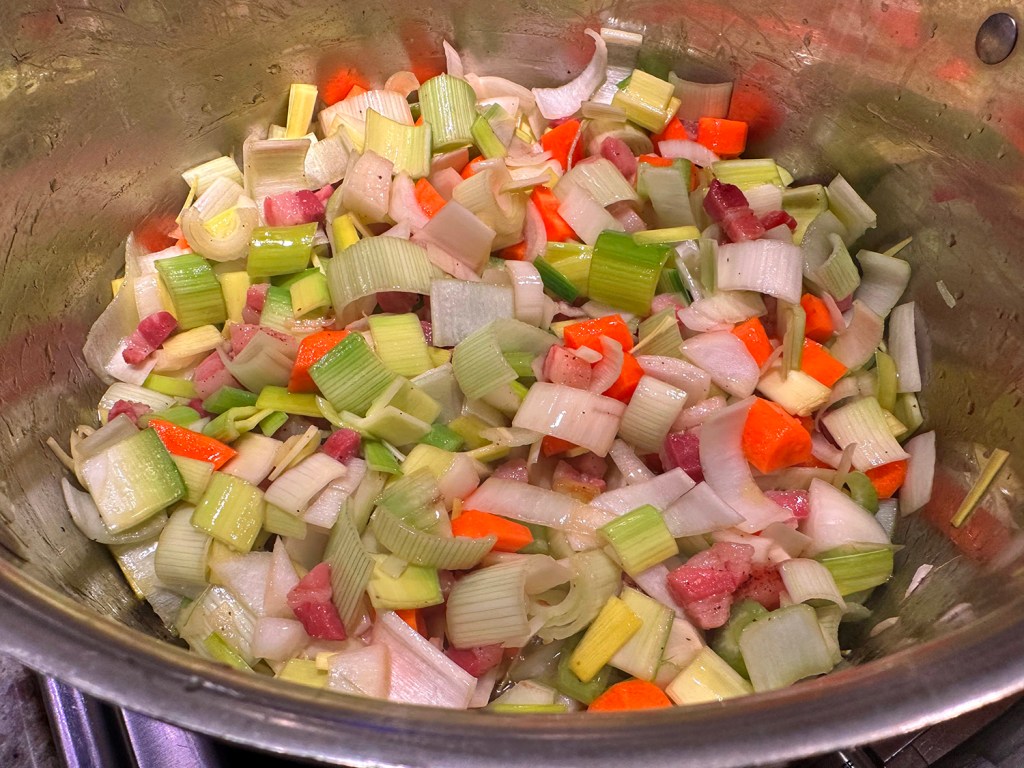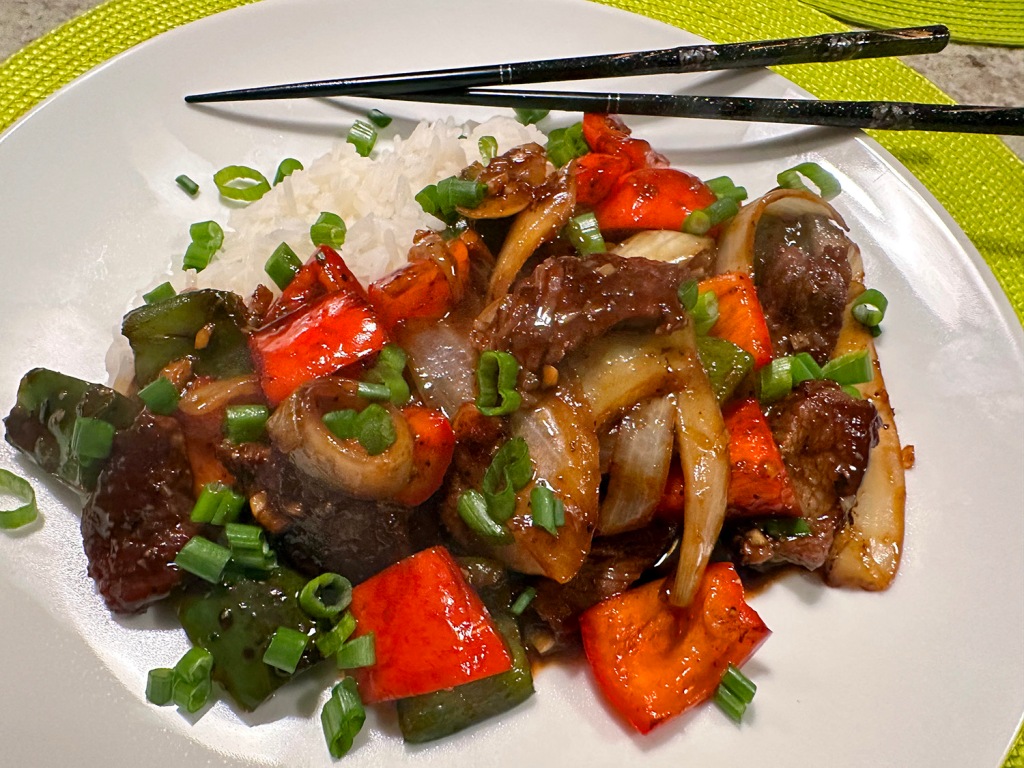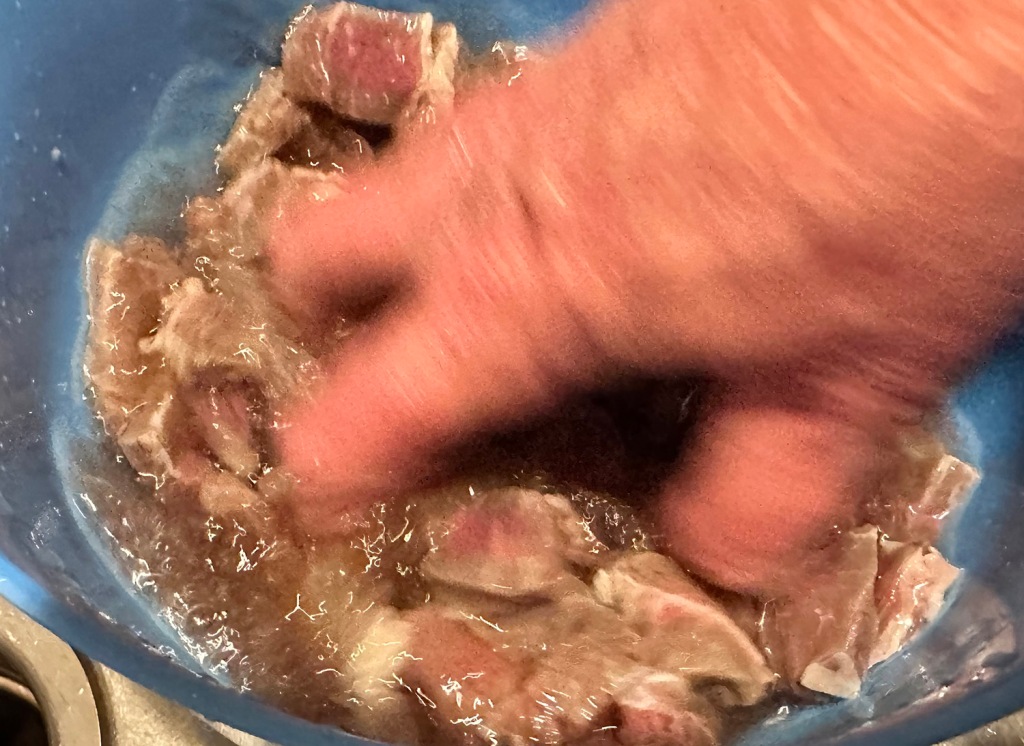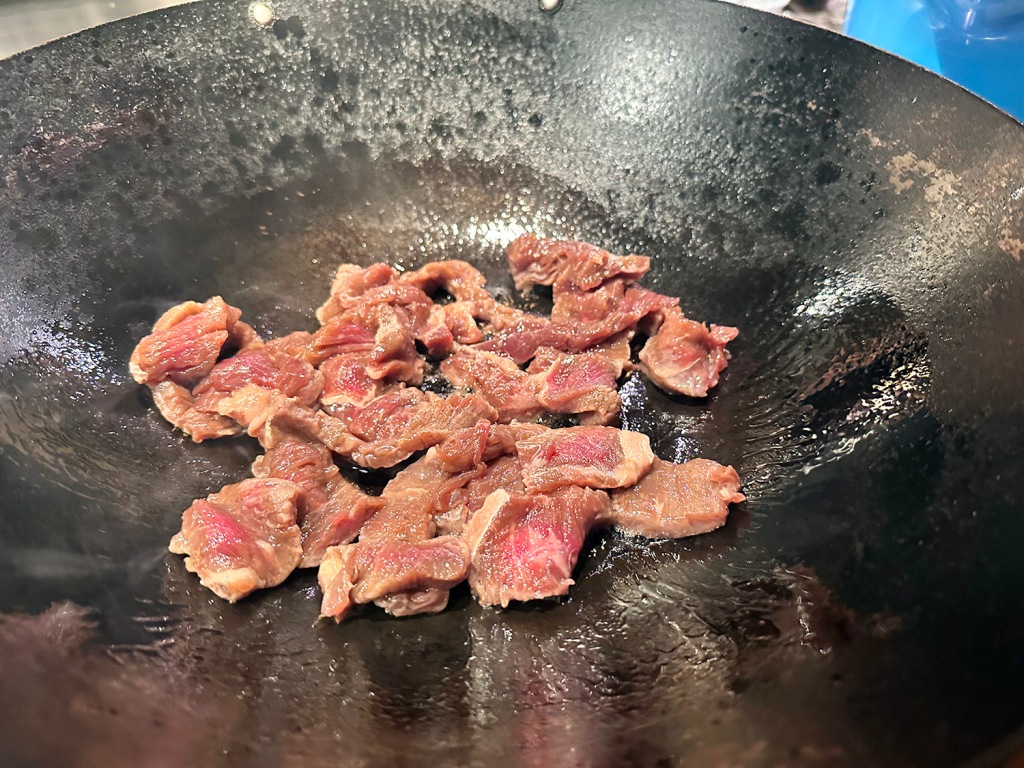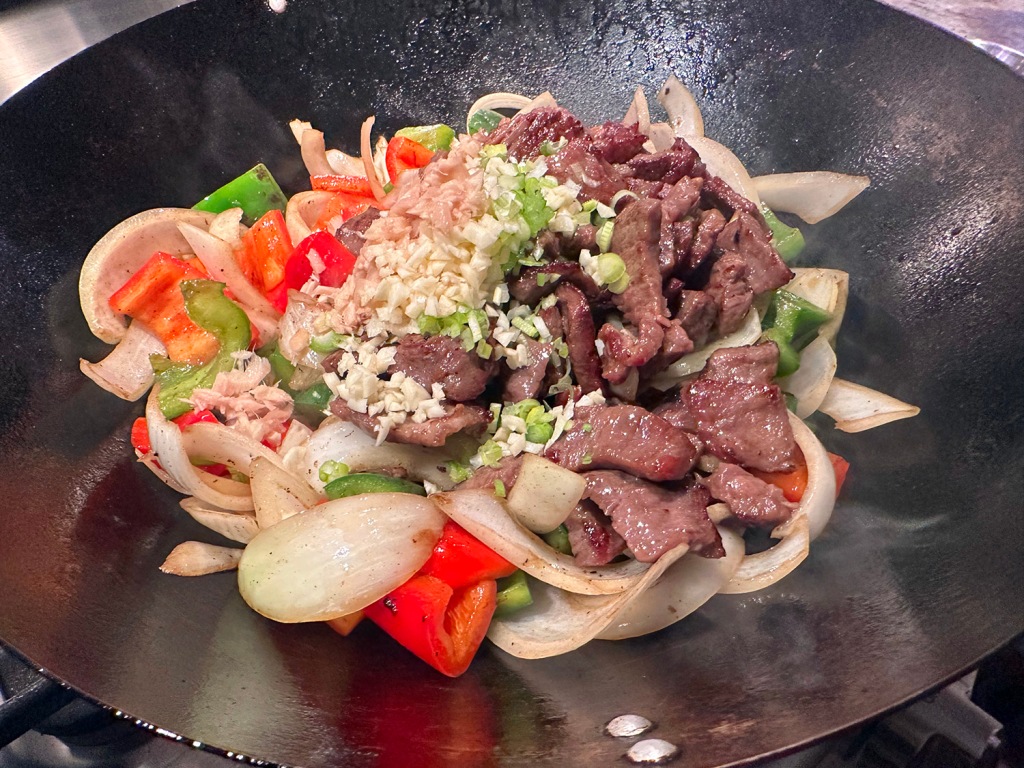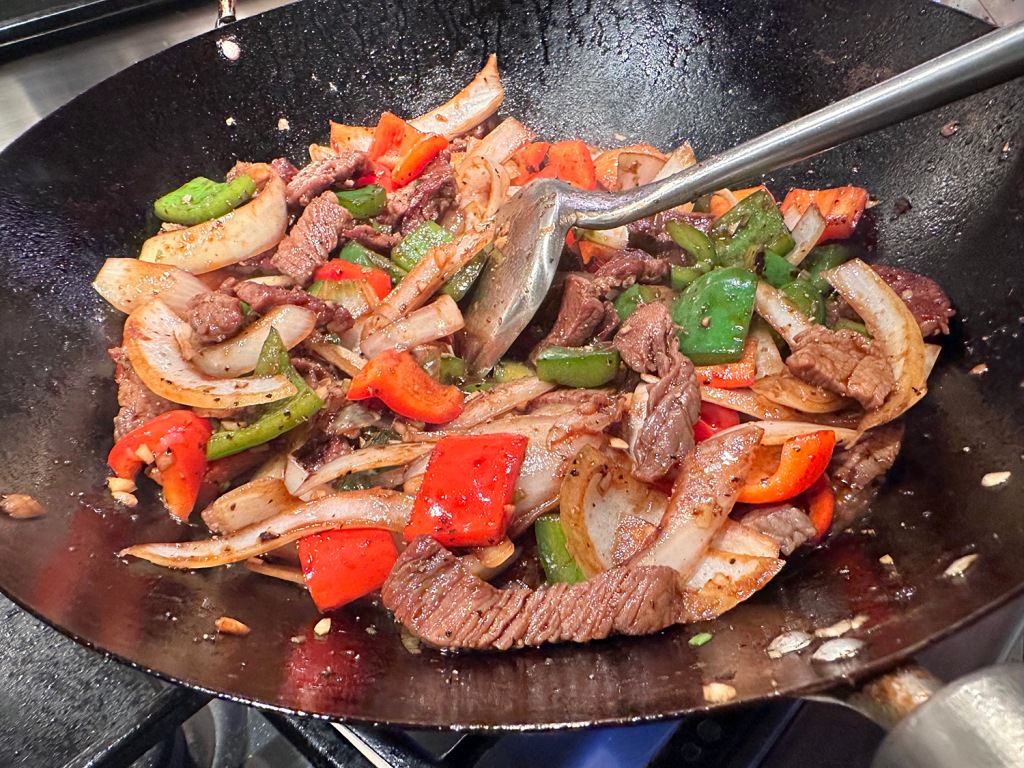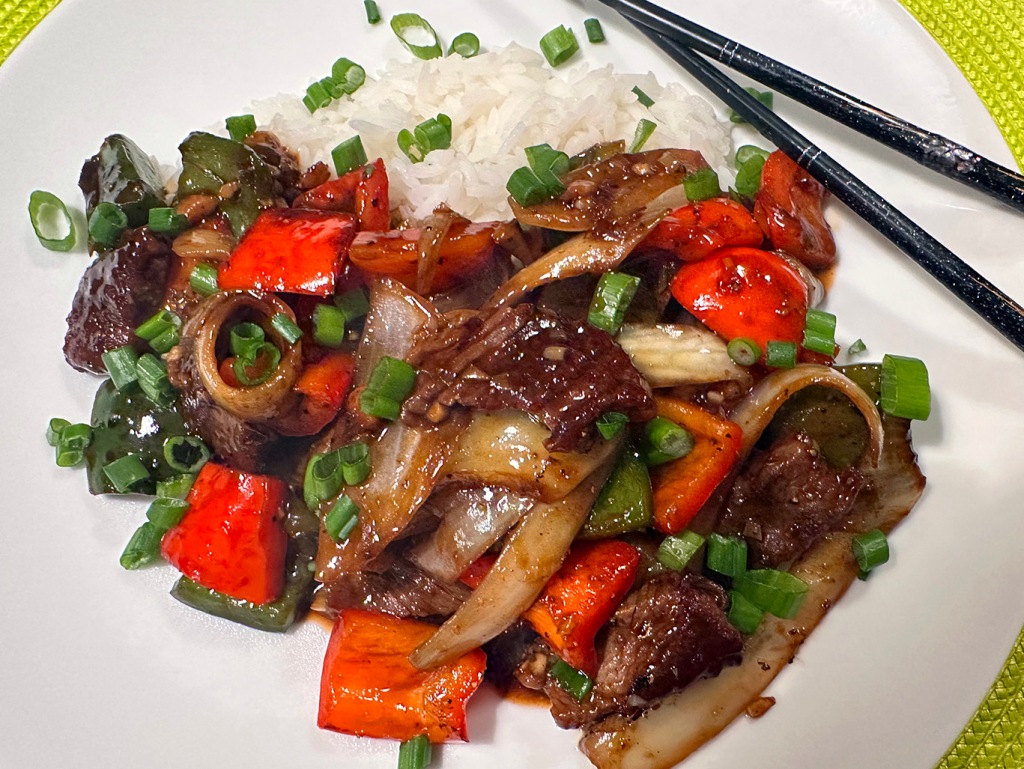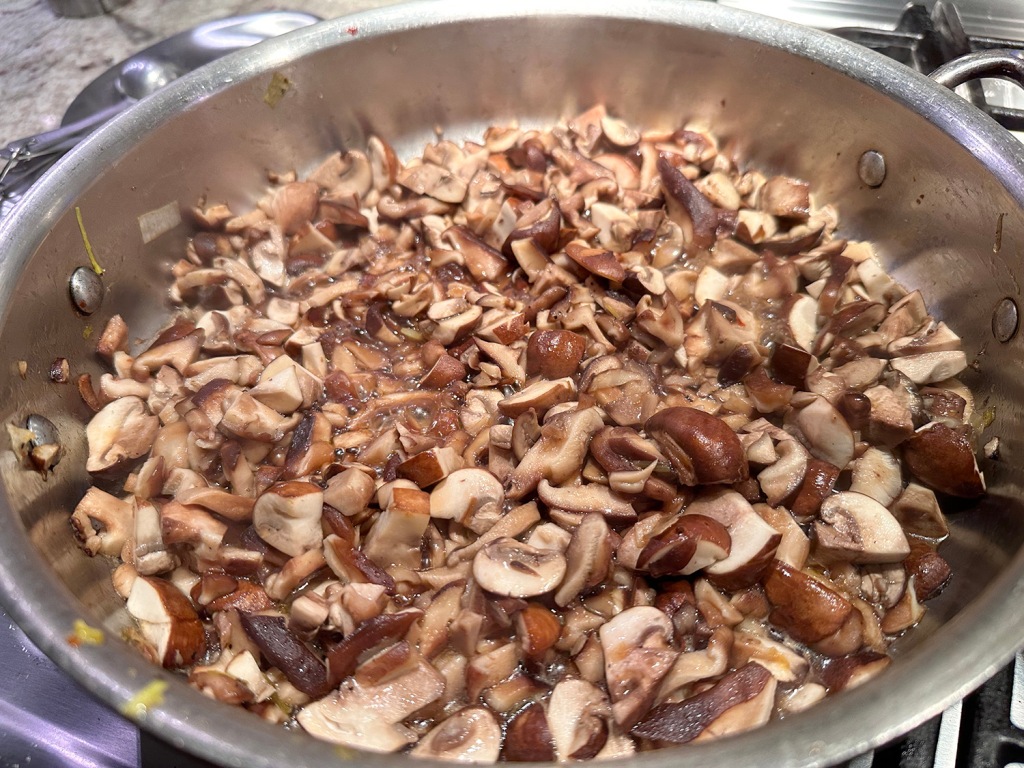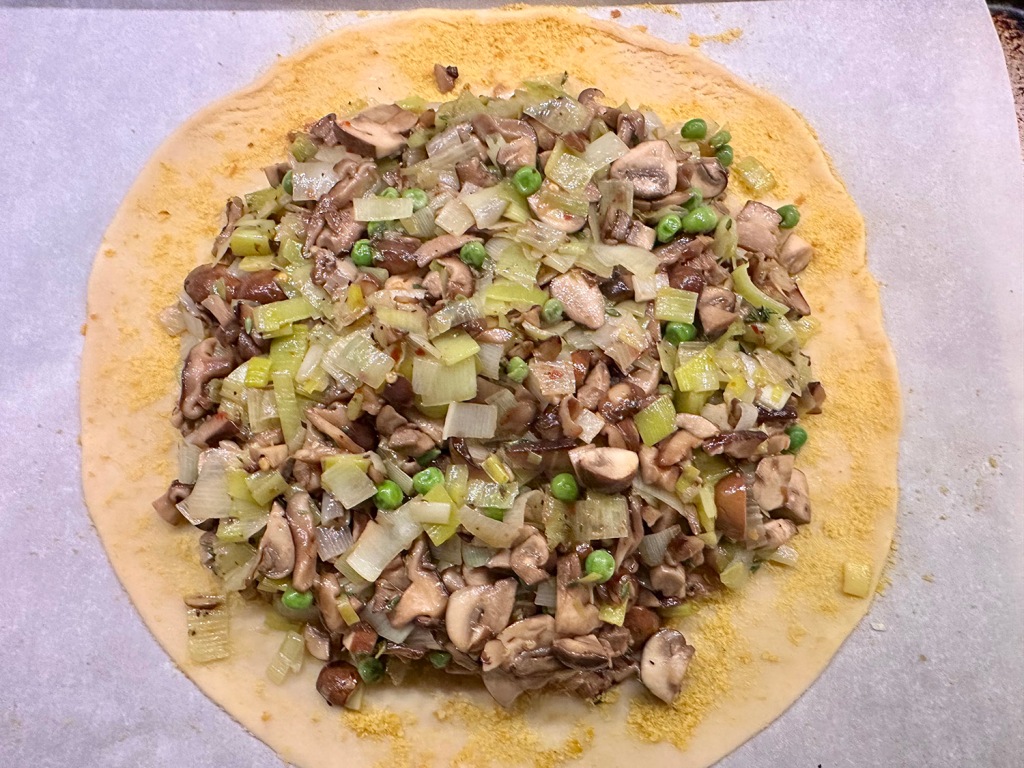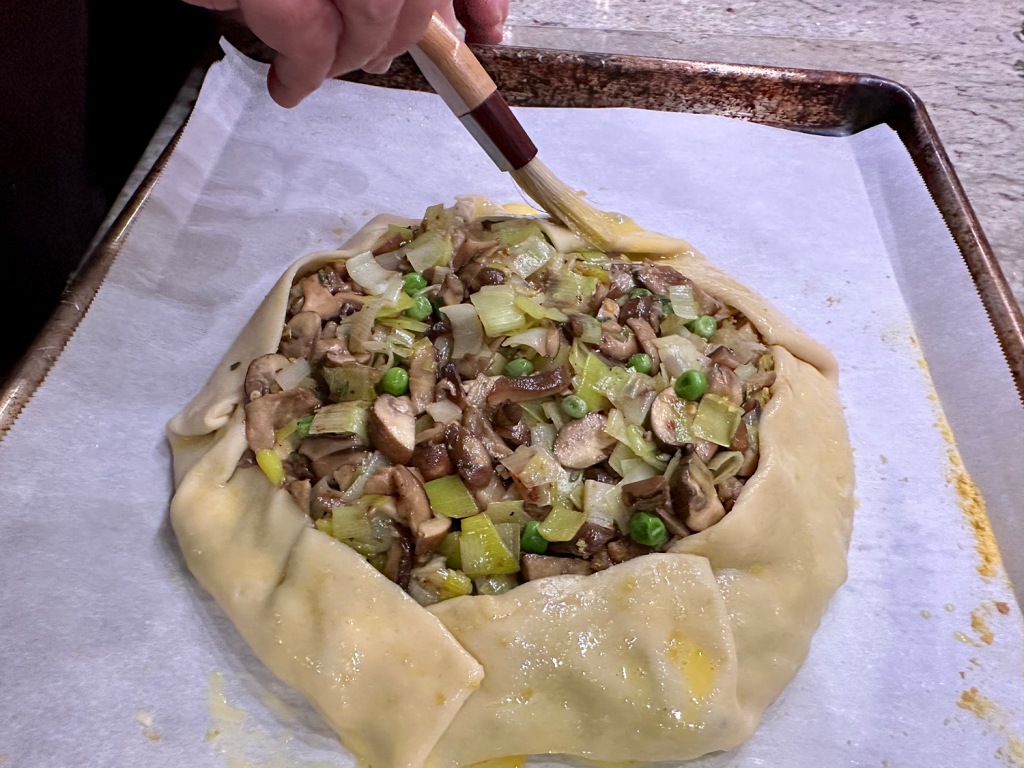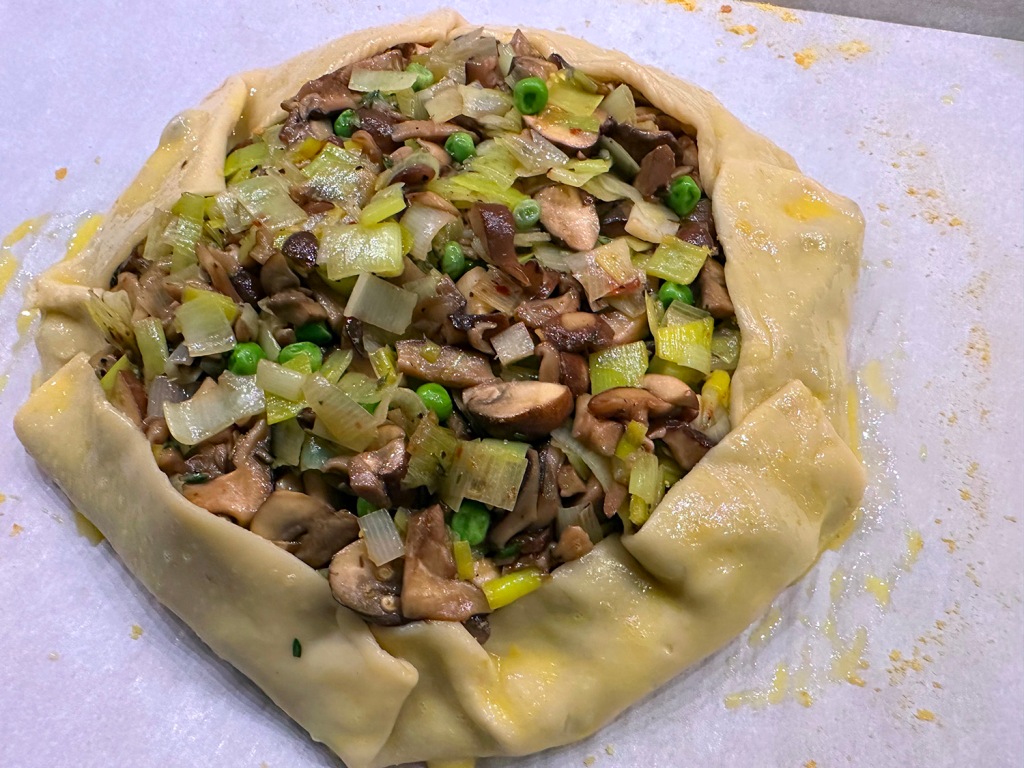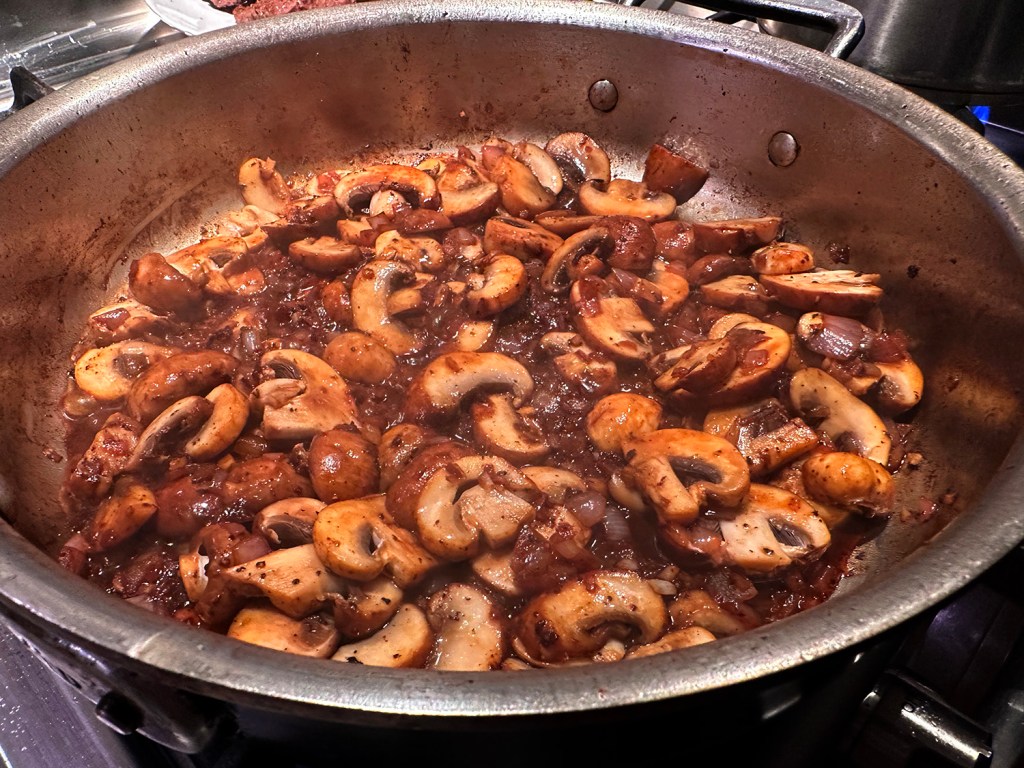Here is the quintessential roast lamb recipe for a sit-down Sunday dinner party, or family supper. From Molly Stevens “All About Roasting” cookbook—a cherished favorite of ours—this compact bundle of tender, flavorful meat serves 6 on the smaller leg of lamb, or up 10 with a 4 1⁄2 pounder like ours, and all without breaking the bank. (BTW, Costco has real good prices on different cuts of lamb.)
This recipe goes beyond the pure and simple method of just seasoning with salt and pepper. The flavor is bumped up by smearing the butterflied piece of meat with an herb paste, tying it back into a bundle, and roasting for about 1 hour. Our leg of lamb weighed in at 4.8 pounds, so quite a bit larger than the recipe called for. But by cooking it in a convection oven, the roasting time didn’t take much longer.
It also made for more servings; which was a good thing because son David and his buddy Mike came over to help lug stuff out of our basement, and they stayed for dinner. The meat was paired with twice-baked potatoes and asparagus bundles wrapped in bacon. Let’s just say, they don’t have “shy” appetites, and they got a doggy bag to take home with them.
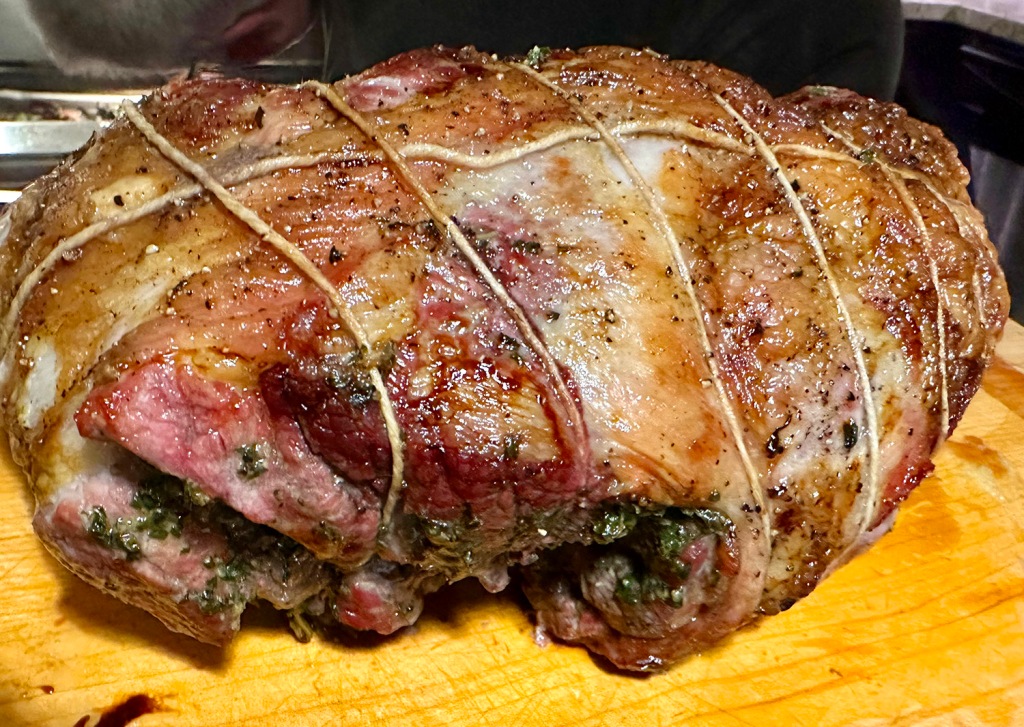
Rolled Boneless Leg of Lamb with Green Herb Stuffing
Ingredients
- One 2 1⁄2- to 3-pound butterflied leg of lamb
- Kosher salt and freshly ground black pepper
- 1⁄2 cup chicken or beef broth, preferably homemade
- 1⁄4 cup dry white wine, or dry white vermouth


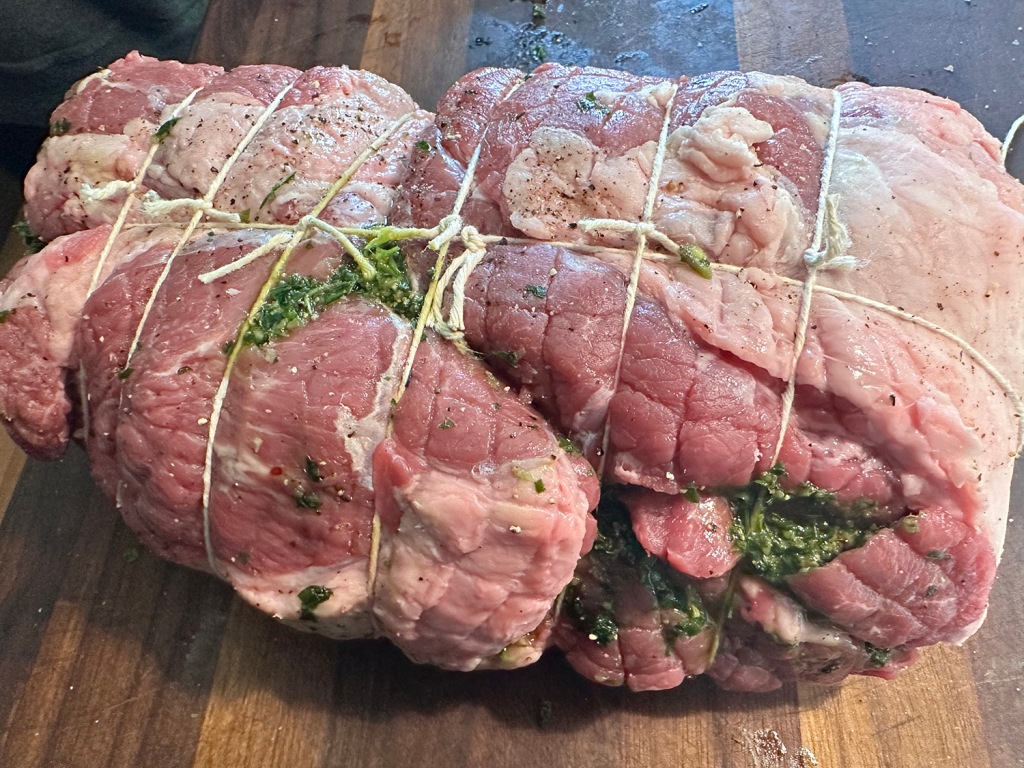

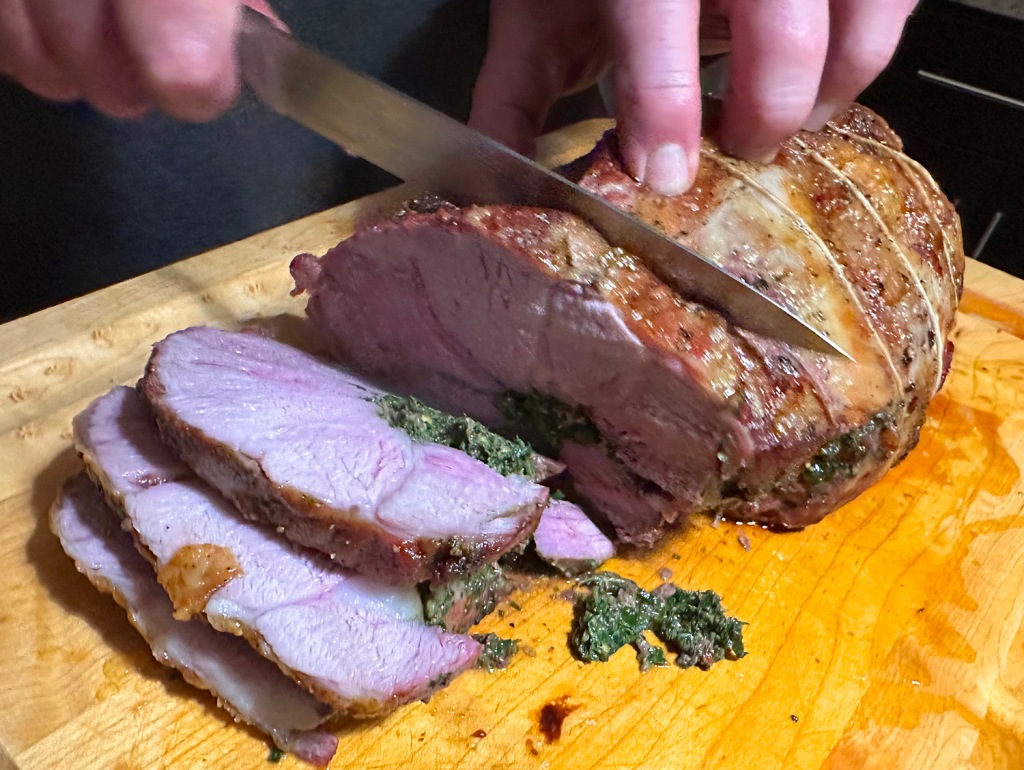
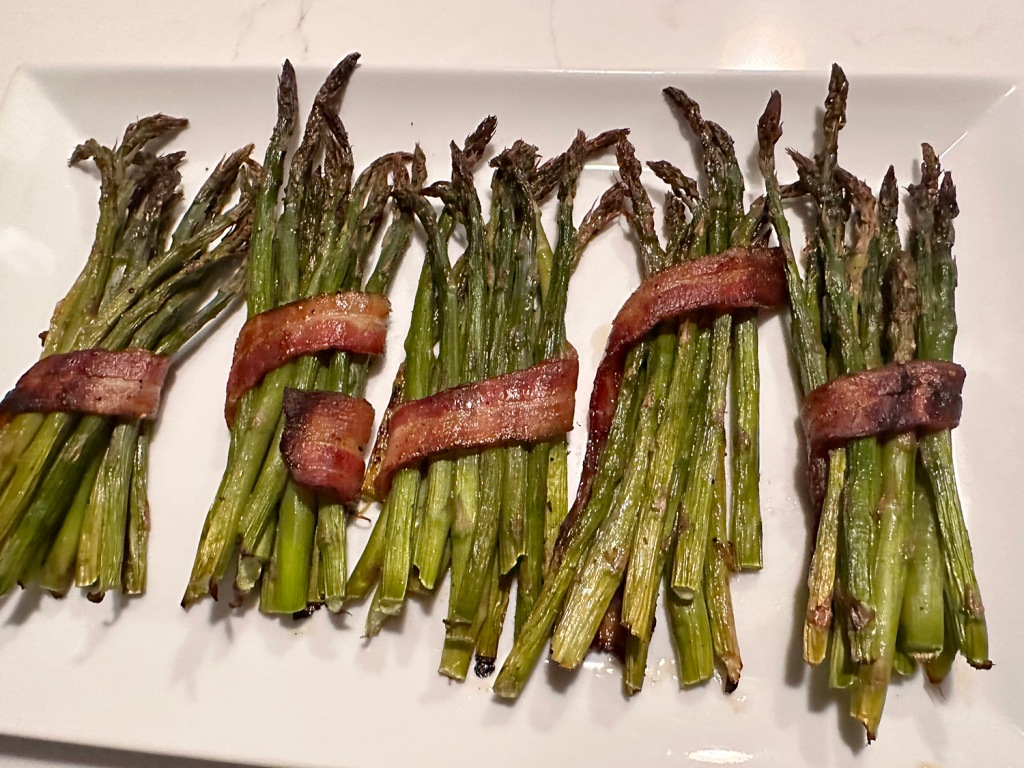
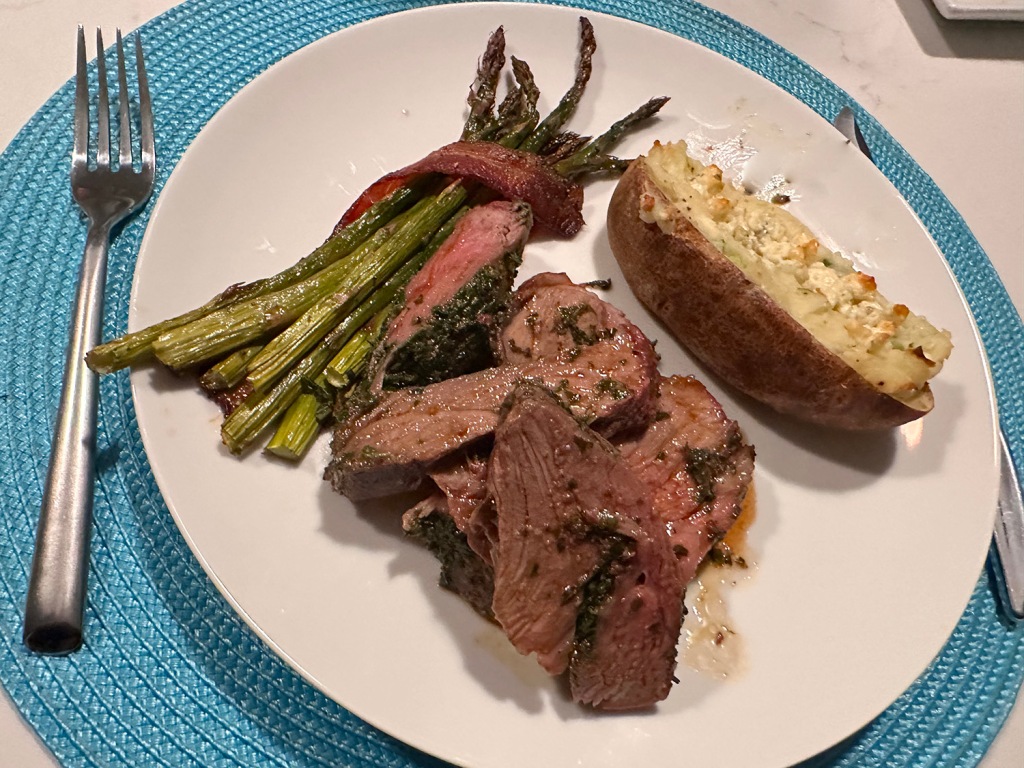
Directions
- Lay the lamb out flat on a cutting board. Arrange it so the cut side is down and the outside faces up. If there is more than a 1⁄8-inch scant layer of fat, pare it down with a sharp, thin-bladed knife till it just barely covers the meat. Flip the meat and trim away any large clumps of fat from the cut side.
- Follow the directions below to make the herb stuffing. Make sure the lamb is skin side down and spread with herb paste.
- Roll the lamb into a cylinder so that the grain of the meat runs the length of the roast. Using kichen string, secure the roll by tying loops of string at 1 1⁄2-inch intervalls along its length.
- Finish by weaving a long loop of twine through the crosswise loops.
- Position a rack in the lower third of the oven and heat to 350°F (235° convection).
- Place the lamb on a shallow roasting pan or a heavy-duty rimmed baking sheet just a bit larger than the meat. Roast until an instant-read thermometer inserted into the lamb reaches 120-125° for rare; 130° for medium.
- Transfer the leg to a cutting board, preferably one with a trough, and let the meat rest for 20-30 minutes.
- If the pan drippings look appealing, and you want to make a pan sauce, start by tilting the and pouring or spooning off the clear fat, stop before you discard any of the drippings, even if this means leaving some fat.
- Add the broth or water and the white wine or vermouth. Heat over medium heat, scrapping up the drippings with a wooden spoon. Transfer the sauce to a small saucepan and simmer over medium-high heat until slightly reduced, about 4 minutes. If it seems a bit watery, simmer a bit longer.
- Carve the meat into thick or thin slices as you like, removing the kitchen string as you go. Add any carving juices to the sauce and serve.
Green Herb Stuffing
This piquant, verdant stuffing enhances the rich flavor of the lamb and provides a visual contrast to the rosy meat.

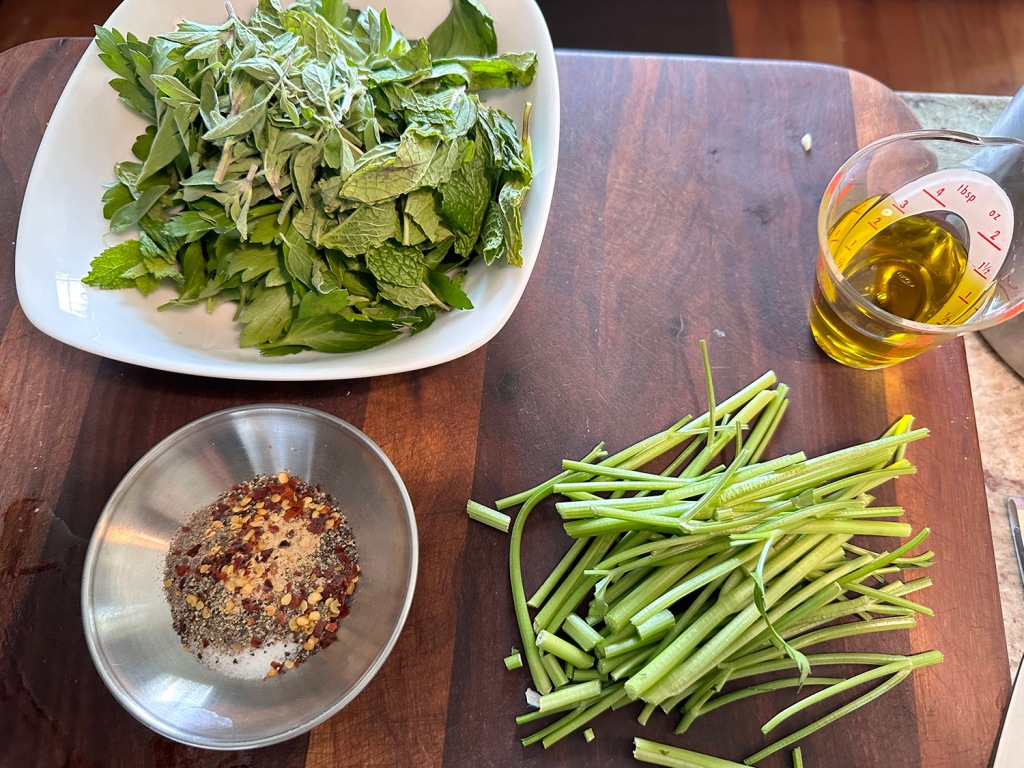

Ingredients
- 3 garlic cloves
- 1 cup loosely packed fresh flat-leaf parsley
- 1⁄4 cup loosely packed fresh mint leaves
- 1 Tbsp. fresh oregano or marjoram leaves
- 2 anchovy fillets, coarsely chopped
- 1 tsp. cracked black pepper
- Kosher salt and freshly ground black pepper
- 1⁄4 tsp. crushed red pepper flakes
- 2 Tbsp. extra-virgin olive oil
Directions
- Start the food processor, and with the motor running, drop in the garlic cloves. When finely minced, stop the motor, remove the top, scrape down the sides of the bowl, and add the parsley, mint, oregano, anchovies, cracked black pepper, 3⁄4 teaspoon salt, and red pepper flakes.
- Arrange the butterflied leg of lamb skin side down, and spread the herb stuffing all the way to the edges, rubbing it in with your hands to get into any crevices or gaps. Roll and tie the roast with kitchen twine. Gather any herb paste that falls out during rolling and tying and rub it over the surface of the lamb.
- Follow the above instructions from Step 5 for roasting the stuffed leg.
Recipes from “All About Roasting” by Molly Stevens



